Fantasy Books
Six Things I Think I Think: March 2025
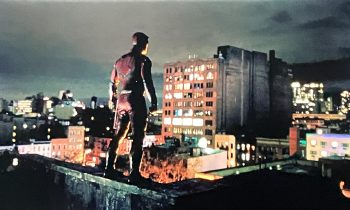 Readers of my weekly column (both of you) know that I quite enjoying giving my opinion on a wide range of topics. I’ll cut the normal ten down to five this time, but it’s been two months since I’ve expounded thus. And that’s at least one month too long, right? So…
Readers of my weekly column (both of you) know that I quite enjoying giving my opinion on a wide range of topics. I’ll cut the normal ten down to five this time, but it’s been two months since I’ve expounded thus. And that’s at least one month too long, right? So…
So, I think that:
1) DAREDEVIL IS EXCELLENT
I didn’t like the Ben Affleck Daredevil movie back in 2003. Or the associated 2005 Elektra movie with Jennifer Garner. And a blind, lawyer, vigilante, just didn’t appeal to me. I’d never read any of the comics, so no nostalgia tie, either.
I skipped the three-season streaming series which dropped back in 2015. And after trying a couple episodes of Jennifer Jones, I passed on the whole The Defenders thing.
For some reason, I decided to watch the first episode of the new reboot, Daredevil: Reborn. Don’t know why, but I did. And man, it was terrific!!! I did the three episodes which had dropped, and I was hooked. I went back and just finished watching season one of the original series. Wow! I’ve started season two.
This show is darker than what I like to watch. And the lighting and visual tone reflects the emotional vibe. Which is in tune with a blind vigilante, I guess. But this is one of my favorite Marvel streaming series (no timeline nonsense probably helps).
And Vincent D’Onofrio as Kingpin is a home run. I liked his appearance at the end of Hawkeye. But he was a MASSIVE disappointment in Echo (as was that show itself). He was emasculated and was a touchy-feely wimp; nothing like the Kingpin I am discovering in Daredevil, and Reborn.
This was a totally unexpected surprise, and I’m really enjoying my discovery of the original show. And Charlie Cox is another actor I had no idea was British, as I watched him (Hugh Laurie, and Marsha Thomason, are two more).
2) YOU SHOULD READ JOHN MADDOX ROBERTS’ SPQR SERIESI’ve talked about this in a couple prior posts. Roberts wrote eight of the Tor Conan books, and he’s easily one of the best – if not THE best – of the authors in that series. His Conan the Rogue is an homage to Dashiell Hammett, and my favorite Conan pastiche.
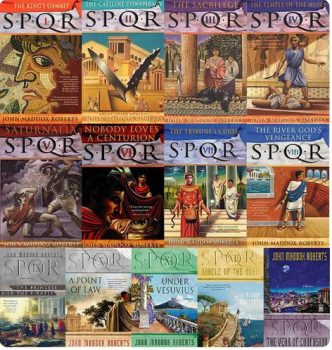 From 1990 through 2010, he wrote thirteen historical mysteries set in Ancient Rome. SPQR (Senatus Populusque Romanus – The Roman Senate and People) feature Decius Caecilus Metellus telling stories from his life, written during Caesar’s reign.
From 1990 through 2010, he wrote thirteen historical mysteries set in Ancient Rome. SPQR (Senatus Populusque Romanus – The Roman Senate and People) feature Decius Caecilus Metellus telling stories from his life, written during Caesar’s reign.
Many Romans of the time, like Cicero, Pompey, and Crassus, are characters in the stories. I think Roberts does a fantastic job of creating Ancient Rome for the reader. I don’t believe he was too free with making up things. I feel like we’re getting a pretty good look at the time.
Decius essentially solves a murder as a function of his government position at the time (they change over the years), each novel. Sadly, Roberts passed away in May of last year, and I did not start the series until shortly after that. I just finished the thirteenth and final audiobook – and I immediately went back and started the first book again, The King’s Gambit. This has become one of my favorite series’.
John Lee is the PERFECT narrator for the novels, and he reads all of them. I enjoyed listening to him narrating every single one.
There are eight short stories, which I would really like to see someone collect and put out together. I have not read any of them, so I’m kinda excited at the thought even though I’ve read all the novels, there’s still a little more SPQR out there for me.
I’ve read that he had been working on a fourteenth novel over the years. I’d certainly like to see someone with the skills, to complete it.
I like a good historical novel, but I’m more likely to read Jack Higgins, or Len Deighton. I read fantasy, not ancient history fiction (Scott Oden’s Men of Bronze is superb). But I am hooked on these and will be listening to the entire thing twice in less than a year. Check out that first novel – read or listen – and treat yourself.
3) WHEN YOU DON’T LIKE THE NARRATOR OF AN AUDIOBOOK…I mentioned in #2 that John Lee is the perfect narrator for the SQPR books. I’ve commented a before on a couple audiobooks where the narrator ruined them for me: Even made them unlistenable.
I have been spacing out Steven Erikson’s Malazan series for well over a decade. Maybe two. I like it. But it’s deep and complex. And it’s dark. I have to be in a certain mood. I’d been on book eight, Toll of the Hounds, for several years.
I’ve talked about how audiobooks let me get to things I wouldn’t have time for, otherwise. I grabbed book eight and nine on an Audible sale. Toll of the Hounds is 44 hours long!!!
And quite frankly, I don’t like Michael Page’s narration. The whole thing feels there was a Malazan reading by the inhabitants of a senior center. Hey – I’m 58. I’m old. But 44 hours of listening to a reader you don’t like, is HARD. I still have 16 hours left.
I will finish this because I want to read the entire Malazan series. I like Ian C. Esslemont’s Malazan books as well, and I like the ones I listened to by John Banks. I wish he had read Erikson’s.
I will probably try to find the time to read book nine (I have the paperback). But reading a single 1,200 page paperback – especially a ‘heavy’ one, just isn’t on my radar these days. Even an okay narrator is workable. But when you don’t actually like the reader, it’s quite the uphill slog.
4) SHOHEI OTANI IS A THE RARE BASEBALL POP CULTURE ICON We are used to pop icons in our culture. They change over time, of course. Whatever you may think of Taylor Swift, she is larger than life. Seventy-ish years ago, The Beatles conquered the world. It seems like it’s more likely to be a singer, than an actor, these days. Tiger Woods, Lebron James – athletes can enter this realm as well.
We are used to pop icons in our culture. They change over time, of course. Whatever you may think of Taylor Swift, she is larger than life. Seventy-ish years ago, The Beatles conquered the world. It seems like it’s more likely to be a singer, than an actor, these days. Tiger Woods, Lebron James – athletes can enter this realm as well.
Baseball players don’t really hit this stratosphere. Babe Ruth was certainly one. Derek Jeter had a bright spotlight, but not Taylor Swift level. Shohei Otani is an elite baseball player. He’s recovering from an arm injury, but he is both a Cy Young caliber pitcher, and he rewrote the offense record books ls year, when he couldn’t pitch. He’s more than a generational player – he’s a century one.
But he is THE icon in Japan. People gather together in the morning, to watch Dodgers games, in Japan. MLB sent the Dodgers and Cubs to Tokyo for two official games, a few weeks before ‘regular’ Opening Day in America. Reading reports about the trip, Ohtani in Japan is like Swift in America. He is a larger than life celebrity. Ohtani is a huge star here in America, but baseball has continued to be less popular than football, and basketball. Opening week is competing with March Madness right now. But Ohtani is the biggest name in baseball. In Japan, he’s a superstar.
Fortnite rolled out an Ohtani skin last week (I bought it!). He’s in his Dodgers uniform, and he’s a baseball-themed samurai. Watching the US opener the other night, they showed the Fortnite skin on the TV Screen, and when he came up to bat, they called him Mr. Fortnite.
Shohei Otani is one of the few players that’s bigger than the game. And in Japan, he could not be a bigger cultural star.
5) CAPTAIN AMERICA: BRAVE NEW WORLD WAS WELL DONEHey Marvel – you can make a good movie that’s only two hours long. Thanks for actually trying it. The latest Captain America movie wasn’t fluffed out. The story was tight a just under two hours, and it didn’t feel like an effort to get all the way through.
It was a sequel to the Edward Norton Hulk (which I had never bothered to watch. Not a prerequisite, but I did watch it after, and it would have helped some. It also built out a bit from the The Falcon and the Winter Soldier.
This wasn’t ‘the biggest’ Avengers-related movie. But it was a good one. I’d like to see more shorter, focused, flicks. It had been out a month when I saw it, and my son and I were the ONLY people in the theater on a weekday afternoon. Those factors considered, I was still pretty surprised. We’re talking a Marvel movie.
6) THUNDERBOLTS LOOKS LIKE LOADS OF FUNI don’t know anything about this group, other than the bits the movies and ‘extra scenes’ were dropping, as Julia Louis-Dreyfuss was up to something. I saw the trailer when I watched the new Captain America. Oh man, this movie looks FUN! I totally enjoyed the trailer, and my son and I will be seeing this in the theater. I’m really looking forward to it.
In fact, this trailer was far more enticing than the one for the new Fantastic Four movie. Which, frankly, looked boring. I’ve written here that I enjoyed the Jessica Alba Fantastic Four movie more than most of my friends. The sequel was meh, but still okay.
I will probably watch the new one – I still haven’t bothered with the 2015 version – at home. But the trailer didn’t intrigue me at all. I forgot it as soon as I saw Thunderbolts. Scarlett Johansson in the new Jurassic Park movie looked way better than The Fantastic Four.
Prior Ten Things I Think I Think
Ten Things I Think I Think (January 2025)
Ten Things I Think I Think (December 2024)
Nine Things I Think I Think (October 2024)
Five More Things I Think: Marvel Edition (September 2024)
Ten Things I Think I Think: Marvel Edition ( September 2024)
Five Things I Think I Think (January 2024)
Seven Things I Think I Think (December 2023)
Talking Tolkien: TenThings I Think I Think (August 2023)
A (Black) Gat in the Hand: Ten Things I Think I think (August 2023)
5 More Things I Think (March 2023)
10 Things I Think I Think (March 2023)

Bob Byrne’s ‘A (Black) Gat in the Hand’ made its Black Gate debut in 2018 and has returned every summer since.
His ‘The Public Life of Sherlock Holmes’ column ran every Monday morning at Black Gate from March, 2014 through March, 2017. And he irregularly posts on Rex Stout’s gargantuan detective in ‘Nero Wolfe’s Brownstone.’ He is a member of the Praed Street Irregulars, founded www.SolarPons.com (the only website dedicated to the ‘Sherlock Holmes of Praed Street’).
He organized Black Gate’s award-nominated ‘Discovering Robert E. Howard’ series, as well as the award-winning ‘Hither Came Conan’ series. Which is now part of THE Definitive guide to Conan. He also organized 2023’s ‘Talking Tolkien.’
He has contributed stories to The MX Book of New Sherlock Holmes Stories — Parts III, IV, V, VI, XXI, and XXXIII.
He has written introductions for Steeger Books, and appeared in several magazines, including Black Mask, Sherlock Holmes Mystery Magazine, The Strand Magazine, and Sherlock Magazine.
You can definitely ‘experience the Bobness’ at Jason Waltz’s ’24? in 42′ podcast.
Sword & Sorcery on a Post-Apocalyptic Earth: Blackmark by Gil Kane
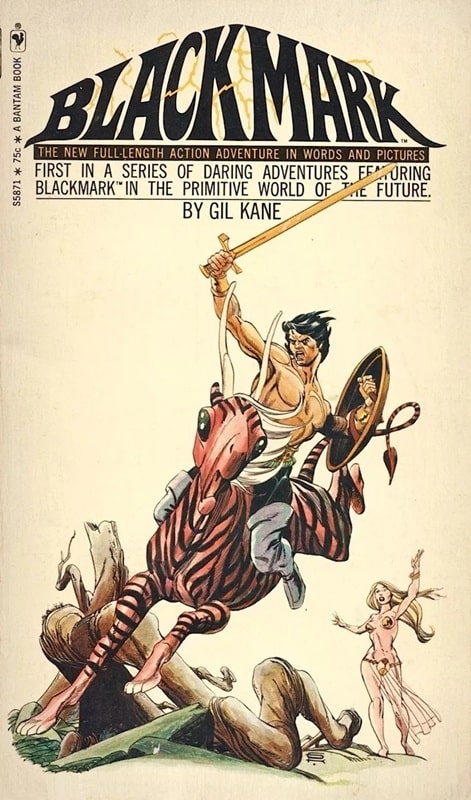
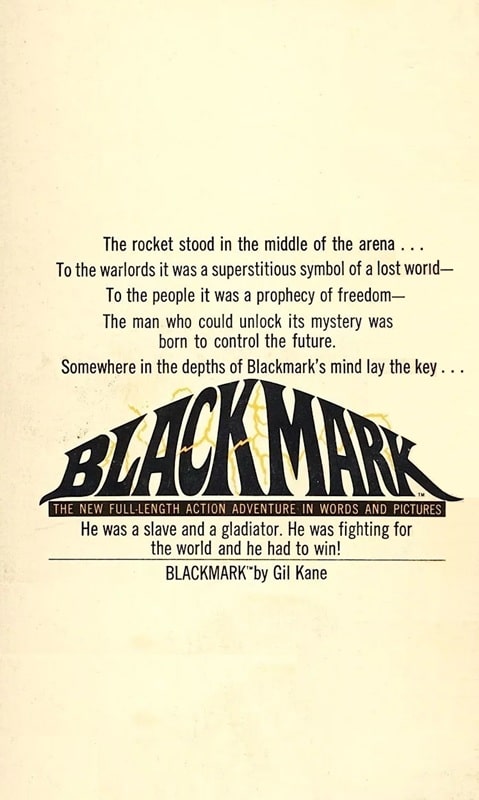
Blackmark by Archie Goodwin and Gil Kane (Bantam Books, January 1971). Cover by Gil Kane
As I’ve mentioned before, I didn’t grow up with comics. They weren’t available in my small, rural town of Charleston, Arkansas in the 1960s and 70s. The first store to carry them appeared around ’74 and had a small spinner rack with a dozen or so titles. By then I was already reading regular books and the comics, while they had interesting art, had much less story than books. I bought a few but never got hooked and knew virtually nothing about any comics creator.
As an adult in my fifties, I watched a movie called The Watchmen, which was very good, and I bought the original graphic novel by Alan Moore. I was blown away by the complex storytelling and started buying other graphic novels. I finally started to learn about some of the great comic book creators over the years. I still don’t consider myself a comic book reader but I keep an eye out for items that might interest me. That’s how, in 2019, I found a cool little book called Blackmark, “by Gil Kane.”
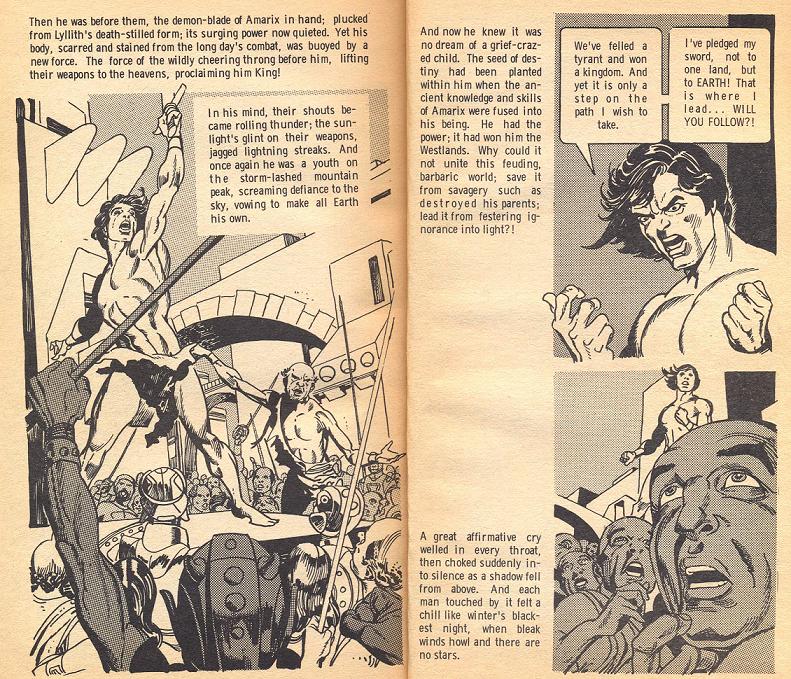 Interior pages from Blackmark. Art by Gil Kane
Interior pages from Blackmark. Art by Gil Kane
Gil Kane (1926 – 2000) was born in Latvia as Eli Katz but immigrated with his family to the US at about 3. He lived in Brooklyn and started working in comics at an early age. By 16, he’d found full-time employment and quit high school.
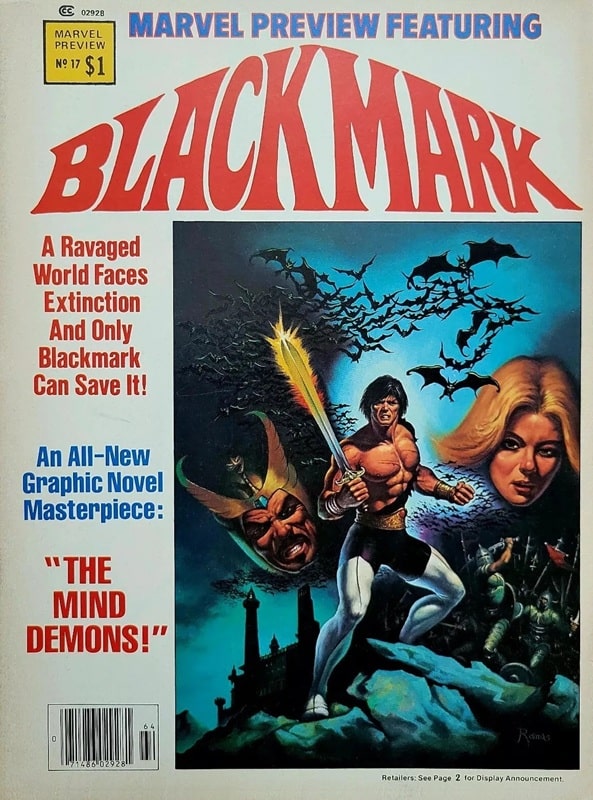 Marvel Preview #17, containing the sequel, Blackmark: The Mind Demons (Marvel Comics, Winter 1979). Cover art by Romas Kukalis
Marvel Preview #17, containing the sequel, Blackmark: The Mind Demons (Marvel Comics, Winter 1979). Cover art by Romas Kukalis
He’s best known for helping create Green Lantern and Iron Fist, none of which I’ve ever read. In 1971, working with a scripter named Archie Goodwin, he created Blackmark (from Bantam), one of the earliest graphic novels. It’s set on a post-apocalyptic Earth and is more sword & sorcery than sword & planet, but it has that exotic S&P feel I crave.
From what I understand, Kane created the setting and characters and did all the art. He provided an outline for the script to Goodwin, who then did the writing. Each page has an illustration or two with squares of story around them. There’s a lot of story, which I appreciated.

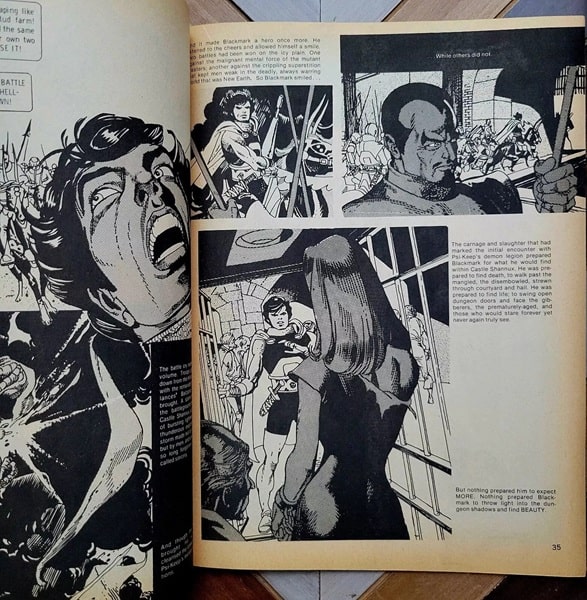
Interiors from the Marvel Preview #17. Art by Gil Kane
The art is great but the script is just wonderful. It’s way over the top sword and sorcery prose and I enjoyed it tremendously. Here’s a taste:
Blackmark awoke to shrill, inhuman cries. Dawn had brought new horror on flapping wings.
I highly recommend Blackmark to readers of S&P fiction.
Charles Gramlich administers The Swords & Planet League group on Facebook, where this post first appeared. His last article for Black Gate was The Sword & Planet Tales of Ralph Milne Farley.
Book Review: The Scorpion and the Night Blossom by Amélie Wen Zhao
I received a review copy from the publisher. This does not affect the contents of my review and all opinions are my own.
 The Scorpion and the Night Blossom by Amélie Wen Zhao
The Scorpion and the Night Blossom by Amélie Wen Zhao
Mogsy’s Rating: 3 of 5 stars
Genre: Young Adult, Fantasy
Series: Book 1 of The Three Realms Duology
Publisher: Delacorte Press (March 4, 2025)
Length: 400 pages
Author Information: Website
In The Scorpion and the Night Blossom by Amélie Wen Zhao, our protagonist Àn’yīng is a young warrior trained in a highly specialized kind of martial art which blends magic and sigils. In her world, survival demands strength, as the land is plagued by mó, a kind of soul-devouring demon that preys on mortals. It is a terrible reality that Àn’yīng knows all too well. Not long ago, her own family was torn apart when it was attacked by a powerful mó, which killed her father and left her month with an even crueler fate. Drained of her life force, the once vibrant woman is now an empty shell of her former self, slowly wasting away. Without intervention, Àn’yīng knows her mother will surely die.
However, hope comes in the form of the deadly Immortality Trials, a competition held by the immortals in their warded realm. The winner who manages to conquer the series of grueling tasks will receive a pill of eternal life, which Àn’yīng believes can save her mother. Determined to claim the prize, she embarks on the journey to enter the trials, knowing that countless other practitioners will be fighting against her for the same reward. One of them is Yu’chén, a handsome rival whose abilities clearly outshine Àn’yīng’s, but for some mysterious reason still agrees to form an alliance. As the competition heats up, with the trials becoming increasingly more demanding, our protagonist must decide whether she can trust her new teammate even as she finds herself torn between her hatred of demons and the undeniable pull she feels toward Yù’chén.
I really wish I could have rated The Scorpion and the Night Blossom more, and maybe if this hadn’t been the umpteenth fantasy romance story I’ve read about a heroine who must enter a life-or-death competition to retrieve some magical lifechanging trinket, I might have. But the current state of YA fiction can be boiled down to authors repurposing the same paint-by-numbers formula again and again, just with some new extra ingredient thrown in each time. In this case, we have a war-torn world, a series of dangerous trials, and a brooding love interest. The “something new” here is the Chinese-inspired mythology and the atmospheric descriptions of the immortal realm and the mó.
Hence I disagree with many of the other reviews here that the earlier parts of the novel were the strongest, while the rest of it was subpar. For me it was the opposite—the beginning was laughably predictable, clichéd, and boring. Àn’yīng’s tale was the same one I’ve read countless times before, only dressed up in a different package. I almost threw in the towel early, especially once she encountered Yù’chén, who was an interesting character, but their dynamic likewise follows a familiar pattern that brings nothing new to the table, right down to him giving our protagonist an annoyingly patronizing nickname.
And while I did appreciate the world-building, the story leans hard into Asian mythology tropes to paint readers a very superficial or kitschy version of the culture. I guess this truly is for the C-Drama girlies, as the dedication suggests–which, I confess, I am not. But if you are, then I can see The Scorpion and the Night Blossom being greatly appealing with its popcorn-y soap opera vibes. Plus, the final act does manage to shake things up. At this point, the plot finally steps away from its formulaic structure, delivering some unexpected twists and raising the stakes in a meaningful way. Although this renewed energy might have come too late in the book, I the last quarter left me cheering at how things were finally getting more unpredictable and interesting.
Overall, The Scorpion and the Night Blossom might have taken its sweet time freeing itself from the genre’s formulaic shackles, but eventually the predictable elements gave way to more imaginative storytelling. It’s a solid, if not groundbreaking, entry into YA fantasy. And though I wasn’t completely won over, the ending has me curious enough to see where the sequel takes the story, especially as this is the first half of a duology.
![]()
![]()
What Possessed You? — Part II
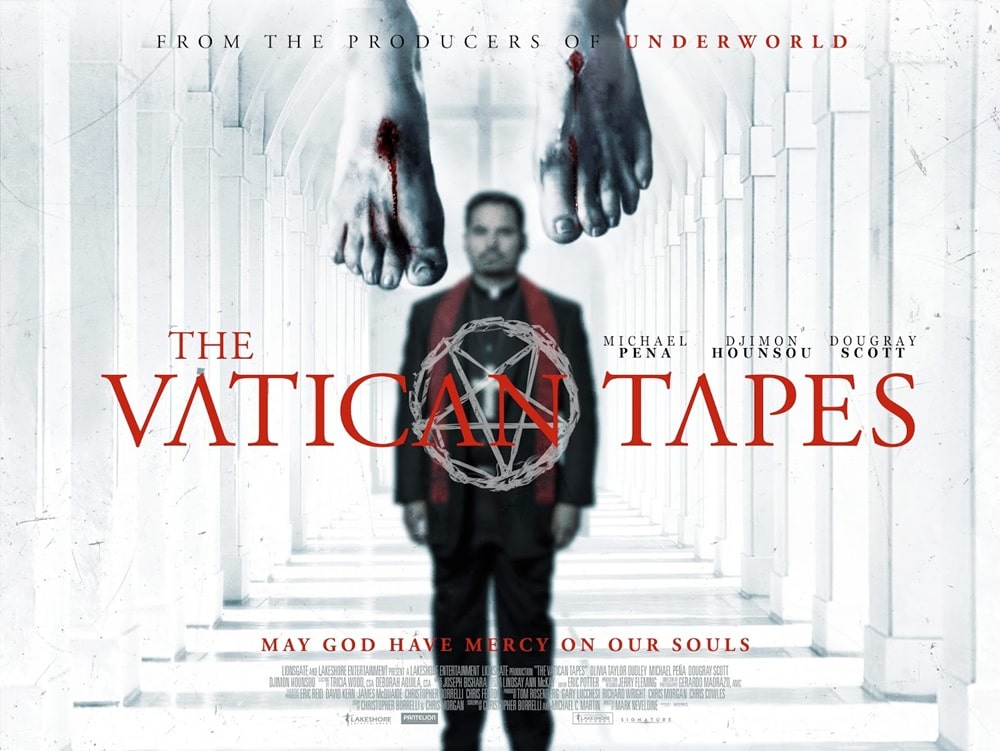 The Vatican Tapes (Lionsgate, July 24, 2015)
The Vatican Tapes (2015) – Prime
The Vatican Tapes (Lionsgate, July 24, 2015)
The Vatican Tapes (2015) – Prime
Imagine my excitement when I read that Mark Nelvedine (The Crank movies, Ghost Rider: Spirit of Vengeance, Gamer) had made an exorcism flick. This was bound to be bonkers!
Oh, foolish lamb that I am.
This limp rag of a horror film had all the bite of a blob fish, and half the appeal. In order to hit that sweet PG-13 demographic, the film has been neutered to such an extent that it was virtually blood-free. Any onscreen nastiness takes place with the victim’s back to the camera, and none of it is helped by illogical editing choices.
It’s a waste of talent too — Dougray Scott, Michael Peña and Djimon Hounsou plod through the proceedings with all the enthusiasm of a 7th-grader getting a vaccine shot, and the poor young woman who is the subject of their attention is played by Olivia Taylor Dudley, who I can only presume was asked if she could do a Kristen Stewart face.
Boring.
4/10
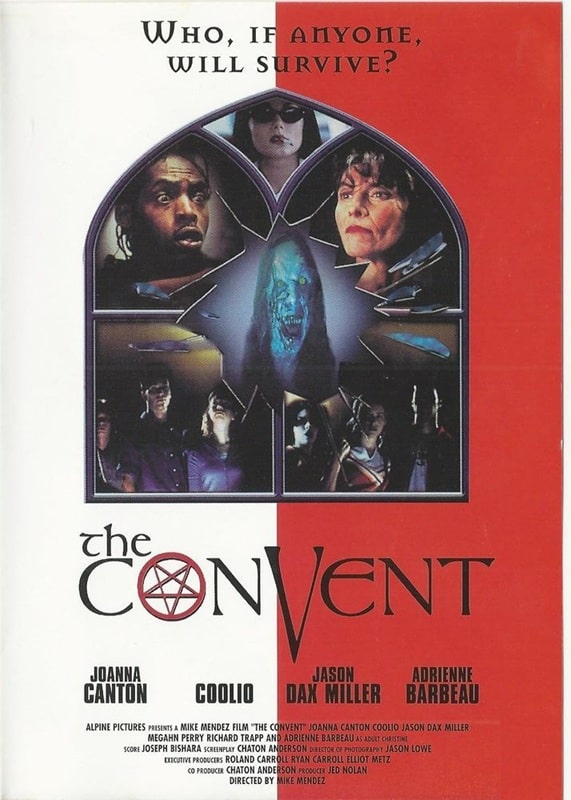
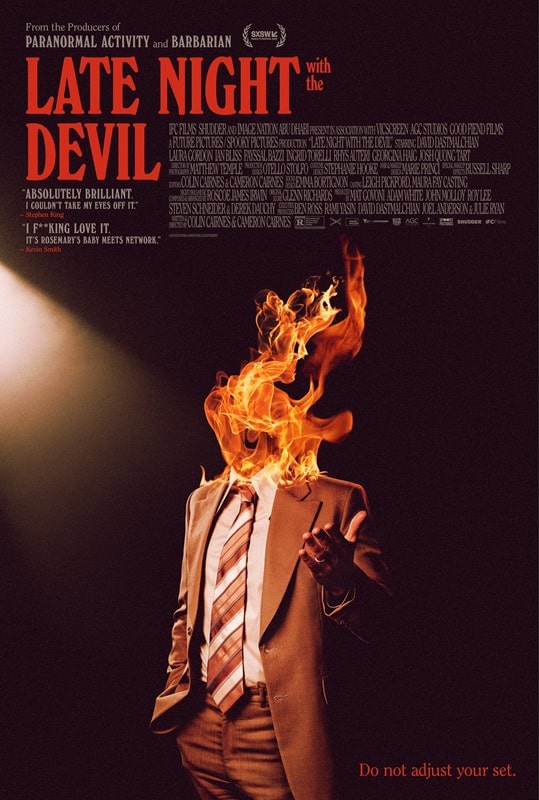
The Convent (Alpine Pictures, January 22, 2000)
and Late Night with the Devil (IFC Films/Shudder, March 22, 2024)
Some nuns and a priest are fussing around an alter when suddenly a cool-looking chick bursts in and starts whaling on them with a baseball bat, before finishing them off with a shotgun.
Okay movie, you have my attention.
Unfortunately, the rest of the flick doesn’t live up to this intro, although it’s a fairly fun attempt to conjure up the daft delights of 80s demon films. A bunch of frat yoots are determined to break into an old, deserted convent and tag it before the other frat houses. They are also hoping to smoke some of the devil’s leaf, and perhaps partake in some heavy fondling. Unfortunately, they inadvertently awaken the spirits of unholy nuns, who promptly possess them and go on a rampage. It’s up to the original nun-knocker from 20 years ago, Adrienne Barbeau, to go all Terminator 2 on the holy horrors.
It’s very silly, occasionally messy, and mostly neon, as the demons were all shot under UV lights.
Megahn Perry was a highlight as Mo, a goth who totally looks like a 19-yr-old Olivia Colman in black lipstick. She was good, as was a Bill Mosely cameo, and Coolio acting ‘extremely’ normal.
It’s not brilliant, but it’s not awful either.
6/10
Late Night with the Devil (2024) – Prime (Shudder)Let’s get the drama out of the way first. Lots of folks over on Xitter claimed they were boycotting this film due to its (minimal) use of A.I. images. I appreciate their stance, however, it’s difficult as all hell to get an indie horror made these days (exhibit A: the several hundred production logos at the beginning), and boycotting this one just hurts the hundreds of other crew-members who had no hand in the decision.
Sure, go ahead and be very disappointed, but to boycott it means you won’t get to see a terrific concept nicely put together.
Current horror darling, David Dastmalchian, is perfect in the role of a late-night host who can’t quite match the ratings of the great Johnny Carson (this is set in 1977). His beloved wife has recently died, the sweeps are nigh, and he’s desperate for a decent show. Tonight’s Halloween spectacular might be the last gasp for Night Owls. Jack Delroy, along with his sidekick, Gus, have invited a half-rate psychic, a James Randi type, and the subjects of possession research, June, the researcher, and Lily, the possessed. As you might guess, it all goes horribly wrong.
The film opens with narration (Michael Ironside!) to bring us up to speed, and then presents the show in its entirety, threaded with behind the scene footage. I loved the concept and the slow build-up, and the general aesthetic was spot on. I’ve seen a lot of reviews from yoots saying it’s ‘mid’, but I think it really helps if you grew up watching the late shows of the 70s and 80s.
Recommended.
9/10
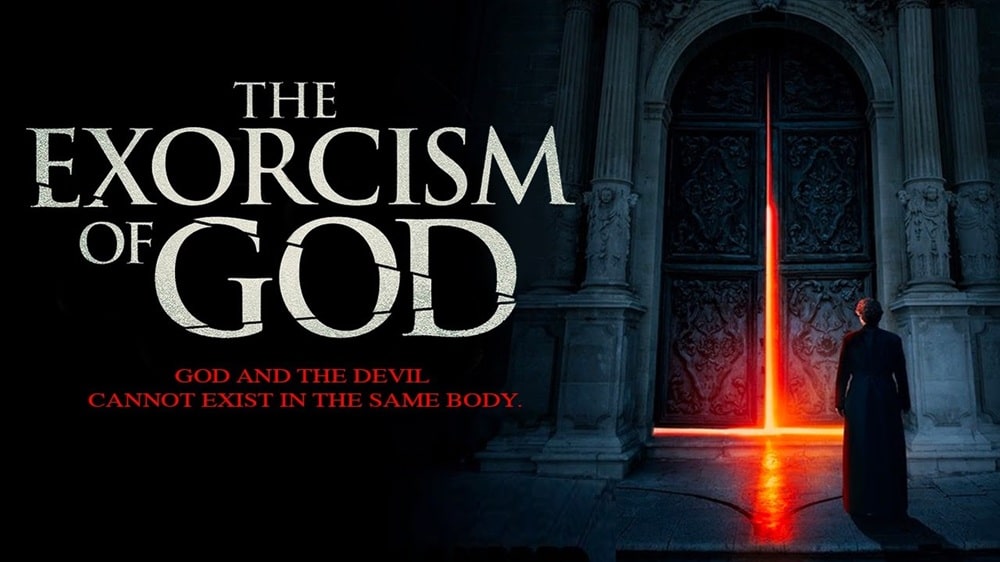 The Exorcism of God (Saban Films, September 27, 2021)
The Exorcism of God (2021) – Tubi
The Exorcism of God (Saban Films, September 27, 2021)
The Exorcism of God (2021) – Tubi
I wasn’t expecting much from this Mexican/US production, mostly because I’d never heard of it, but it was a pleasant surprise.
The director, Alejandro Hidalgo, get all of the cliches out of the way in the first few minutes, including a totally unsubtle Exorcist shot, yellow eyes, shaky beds, psychosexual taunting, inexperienced priest, etc etc. However, this story has more to offer than the usual schtick we get in these films.
This time, the priest hides a very dark secret that stems from the initial exorcism, a secret that rears up again 18 years later when he is exalted as a ‘saint’ for saving a Mexican village. Father Peter is a really interesting, conflicted character, and I liked Will Beinbrink’s portrayal of the tortured soul very much. In fact, it’s well acted all round and beautifully shot, although it relies a bit too heavily on jump scares, which were unnecessary.
Plenty of atmosphere, lots of creepiness and a genuinely ghastly plot. Recommended.
8/10
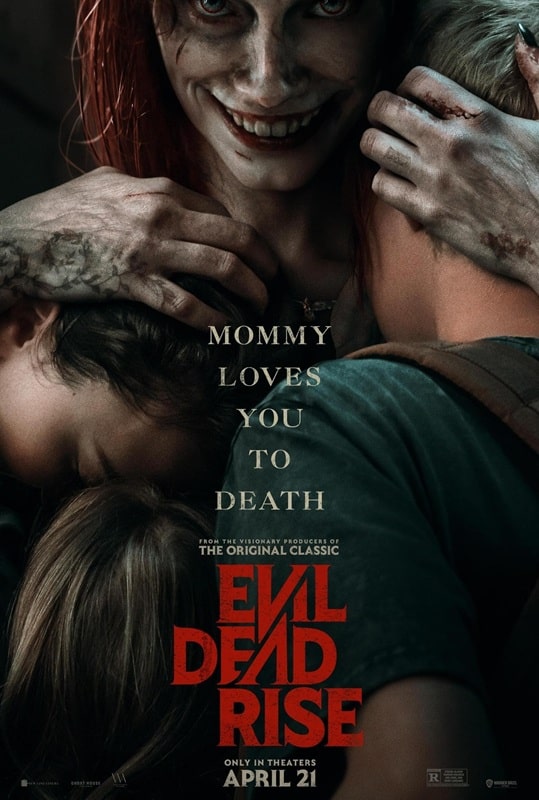
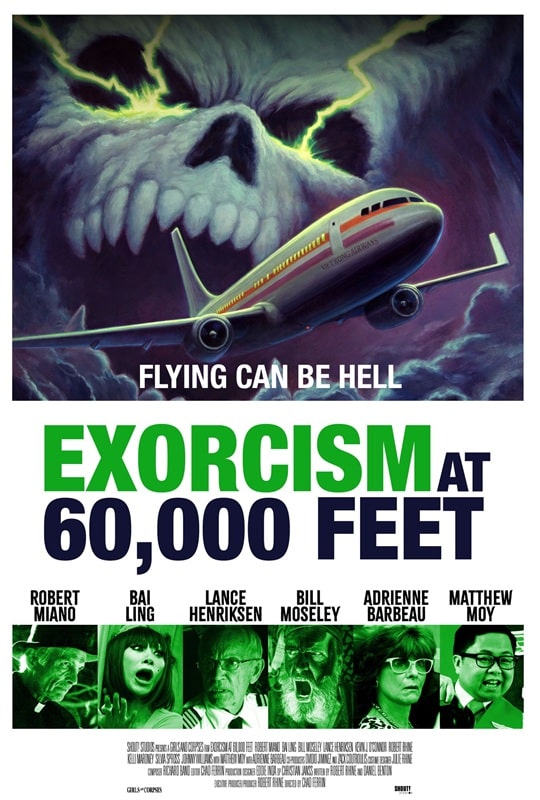
Evil Dead Rise (Warner Bros. Pictures, April 21, 2023)
and Exorcism at 60,000 Feet (Shout! Studios, August 9, 2019)
Curse me and my self-imposed rules. I wanted to watch this one last year, but I knew I was doing this possession project after the Tubi one, so I had to wait. It was worth it!
If Fede Álvarez’s Evil Dead in 2013 was the gritty embodiment of Raimi’s original, then this follow-up, written and directed by Lee Cronin, is a pitch-perfect take on the sensibilities of Evil Dead II. You can tell that Raimi, Tapert and Campbell were part of the production, because even though Rises is darker and bloodier, as befits a modern version, it is struck through with subversive humour. That’s the weird thing about the Evil Dead franchise — I can’t think of another film series that I gleefully watch as it inflicts so much ghastliness on decent people . It’s somewhat perverse.
The theme and storyline, with its focus on family, is quite disturbing, and yet there are several sequences that had me silently whooping; the carnage watched through a peephole, finding the right pot size to put a deadite down, and an eyeball gag straight out of the Raimi playbook. Once all the possessed are chanting ‘dead by dawn!’ and souls are threatened with a good swallowing, you know that the good old days are back.
That’s not to take anything away away from Cronin. I think he’s done a stellar job here; its a well-crafted story and it looks great. The stand-out for me was Lily Sullivan, and I would totally watch the hell out of an Evil Dead series featuring her chainsaw-toting Beth.
Brilliant stuff.
10/10
Exorcism at 60,000 Feet (2019) – TubiA priest (Father Romero), played very well by Robert Miano, turns up at a house, poses à la The Exorcist at the front door, barges in and shoots a demon in the head (Bill Mosely, shaggy as ever) with a crucifix gun. So far, so good. The homeowner snaps out of his own demonic possession, sees his dead wife and screams in anguish. Then he wanders off into the shadows, looking for the rest of his family, crying ‘Oh God’ every time he finds one, his voice getting more horrified with each new discovery.
Utterly disturbing and heartbreaking, and yet it is played for the darkest of laughs, and God help me, I smiled. Then, as the priest manhandles the demon’s body into the back of a hearse, Richard Band kicks in with one of his patented sound-alike scores, and blow me down if it isn’t the music from Airplane! So this is where we are going.
What follows is a uniquely offensive exercise in attempted Zucker Brothers style comedy on a trans-pacific flight (via Viet Kong, no less) with some demonic gore thrown in. For the most part, the over-the-top comedy doesn’t work (I wish they had stuck to the blacker than pitch humor of the opening), but the ludicrousness belts along lickety-split, and there are definitely a couple of moments that made me chortle.
Here’s a list of the crew and passengers just in case you think they missed out on an opportunity to upset anyone.
- Captain Houdee (aha!) the alcoholic pilot played by Lance Henrikson made up as Sully,
- Kevin J. O’Conner (who I’ve missed terribly) as the dozing co-pilot,
- Bai Ling (The Crow) and Matthew Moy (2 Broke Girls) as the racially stereotyped flight crew (Ling’s character is transsexual to boot, which wasn’t handled as badly as you might expect, but still the butt of a few jokes),
- A woman who has a golden glow emanating from her hoohah like Marsellus Wallace’s briefcase,
- An adult dwarf with Tourette’s who breastfeeds off Kelly Maroney (Night of the Comet),
- A Hasidic Jew played by Robert Rhine (one of the writers),
- A body builder,
- A pregnant woman,
- A guy who takes advantage of the pregnant woman while she is unconscious (really?),
- Adrienne Barbeau with a dead service dog,
- A deaf and mute guy who does nothing,
- A pair of nuns who get naked and then get it on,
- A Sopranos extra,
- A Tibetan holy man,
- A messy mile high club attempt,
- tampon gags,
- fart gags,
- and Bai Ling caked in makeup being told to crank it up to 26 and scream every line.
There’s also pea soup, Twilight Zone references and plenty of gore.
It would be easy to dismiss this one, but I think it’s perfect for the very very drunk or very very stoned, or for those with no moral hang-ups, and at the risk of eternal damnation, I’m going to recommend it just to you. You know who you are.
6/10
Previous Murkey Movie surveys from Neil Baker include:
What Possessed You? — Part 1
Fan of the Cave Bear
There, Wolves
What a Croc
Prehistrionics
Jumping the Shark
Alien Overlords
Biggus Footus
I Like Big Bugs and I Cannot Lie
The Weird, Weird West
Warrior Women Watch-a-thon
Neil Baker’s last article for us was Part I of What Possessed You? Neil spends his days watching dodgy movies, most of them terrible, in the hope that you might be inspired to watch them too. He is often asked why he doesn’t watch ‘proper’ films, and he honestly doesn’t have a good answer. He is an author, illustrator, outdoor educator and owner of April Moon Books (AprilMoonBooks.com).
Free Your Mind! 6 Novels That Spark Creativity & Transformation
The power of novels, the power of reading, seems immeasurable. The books we read and…
The post Free Your Mind! 6 Novels That Spark Creativity & Transformation appeared first on LitStack.
WHEN THE MOON HITS YOUR EYE by John Scalzi
Tor Doubles: An Overview
 Tor Doubles
Tor Doubles
In October of 1988, Tor Books released the first Tor Double, a volume that reprinted Arthur C. Clarke’s 1971 novella Meeting with Medusa with Kim Stanley Robinson’s novella Green Mars. Over the next thirty-five months, they would publish a total of thirty-six books in the series.
In general, there was little to link the two short stories that were published in each volume, although in 1990, Tor experimented with the publication of four Tor Doubles that included a classic story, by authors including C.L. Moore, L. Sprague de Camp, Leigh Brackett, and Roger Zelazny, with original stories that were set in the same world. The following year would see addition original stories published in the series.
Similarly, most of the volumes contained stories by two different authors, however four of the books published in 1991 were single author collections, with two stories each by Gordon R. Dickson, Mike Resnick, Damon Knight, and Fritz Leiber.
Modeled after the Ace Doubles series, the books were initially published in a dos-a-dos format, with each story getting its own cover and bound upside down in relation to the other book, so neither story was first (although the presence of an ISBN code on one side had a tendency to make it feel like the “back” of the book). The four volumes that included sequels were published with a single cover and beginning with volume 27, which included Orson Scott Card’s Eye for Eye and Lloyd Biggle, Jr.’s The Tunesmith, all the volumes were published in the more traditional format.
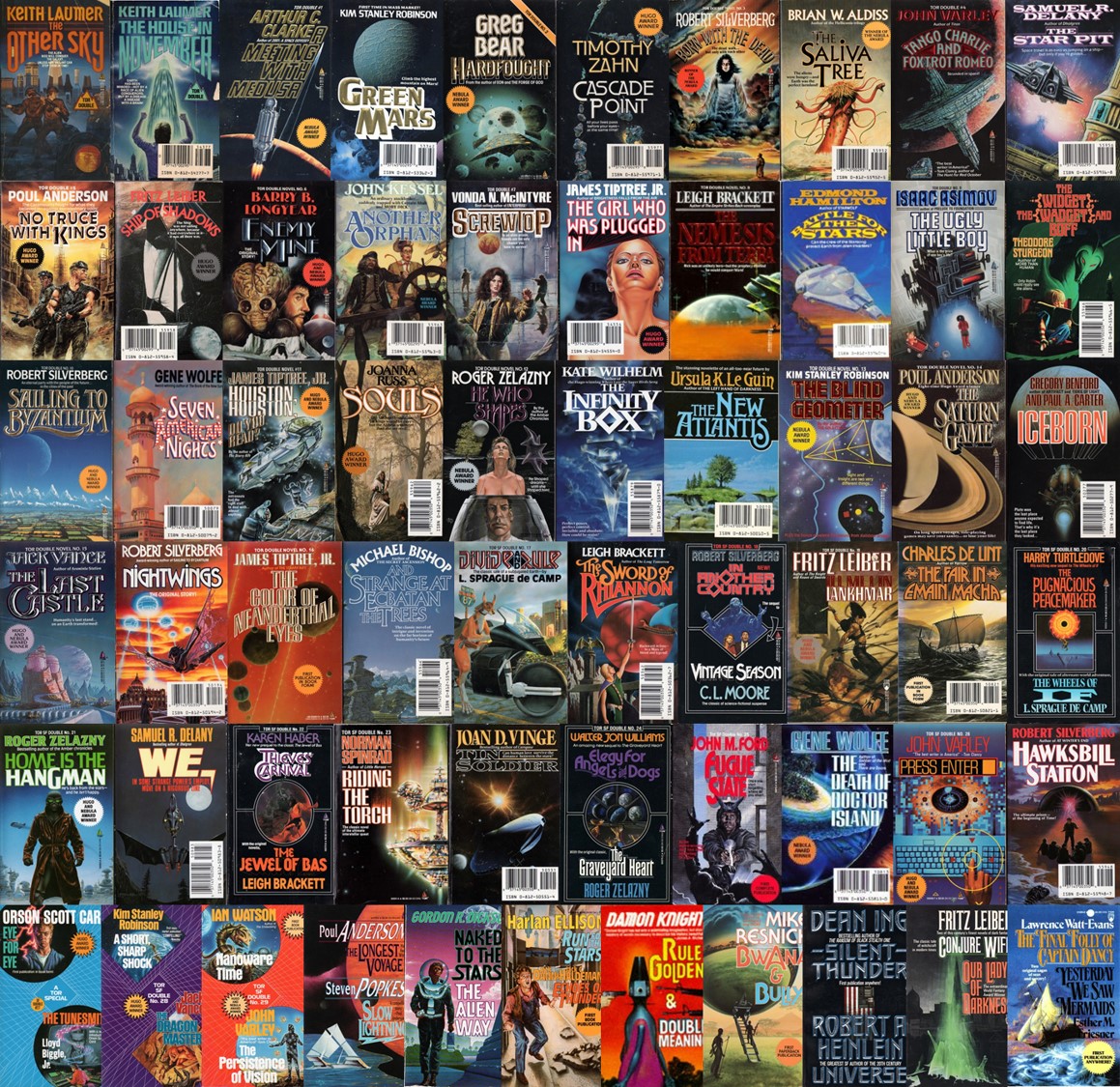 A Mosaic of Tor Doubles covers
A Mosaic of Tor Doubles covers
The Clarke/Robinson volume was not, actually the first Tor Double, although it states “Tor Double #1” on the cover for the Clarke story. In 1981, Tor published Keith Laumer’s novel The House in November with a “special bonus: complete short novel” The Other Sky as part of their “Jim Baen Presents” series When the book was reprinted in 1985, the two stories were printed in the dos-a-dos format with the words “Tor Double” appearing on both sides.
Although the final volume in the series, a collection of Fritz Leiber’s novels Conjure Wife and Our Lady of Darkness was published in August of 1991, there was at least one more volume scheduled to see print, although it was never published. Instead, Esther M. Friesner’s Yesterday, We Saw Mermaids was published as a stand-alone novel by Tor in 1992 and Lawrence Watt-Evans’ The Final Folly of Captain Dancy was first published by Tor at the back of their printing of his novel The Rebirth of Wonder (along with an excerpt for Watt-Evans and Friesner’s collaboration Split Heirs) and was later included in his collection Crosstime Traffic.
The series includes works by 51 authors (including two collaborations). Sixteen authors are represented by multiple stories, with eight appearing twice (half of those in single author volumes), six appearing three times, Fritz Leiber having four stories in the series (once in a single author volume), and Robert Silverberg having five stories.
Although there were only a handful of original stories published in the Tor Doubles series, many of the works selected to be reprinted were award nominees and winners. The series included 33 Hugo nominated works and 17 winners and 27 Nebula nominated stories and 16 winners. Robinson’s A Short Sharp Shock was nominated for a Hugo Award for the year it appeared in the series, although it had previously been published by Mark V. Zeising and Asimov’s.
Over the next thirty-nine weeks, I intend to look at the books published (or not published, as the case may be) as part of this series.
 Steven H Silver is a twenty-time Hugo Award nominee and was the publisher of the Hugo-nominated fanzine Argentus as well as the editor and publisher of ISFiC Press for eight years. He has also edited books for DAW, NESFA Press, and ZNB. His most recent anthology is Alternate Peace and his novel After Hastings was published in 2020. Steven has chaired the first Midwest Construction, Windycon three times, and the SFWA Nebula Conference numerous times. He was programming chair for Chicon 2000 and Vice Chair of Chicon 7.
Steven H Silver is a twenty-time Hugo Award nominee and was the publisher of the Hugo-nominated fanzine Argentus as well as the editor and publisher of ISFiC Press for eight years. He has also edited books for DAW, NESFA Press, and ZNB. His most recent anthology is Alternate Peace and his novel After Hastings was published in 2020. Steven has chaired the first Midwest Construction, Windycon three times, and the SFWA Nebula Conference numerous times. He was programming chair for Chicon 2000 and Vice Chair of Chicon 7.
Goth Chick News: The Night We Podded Out
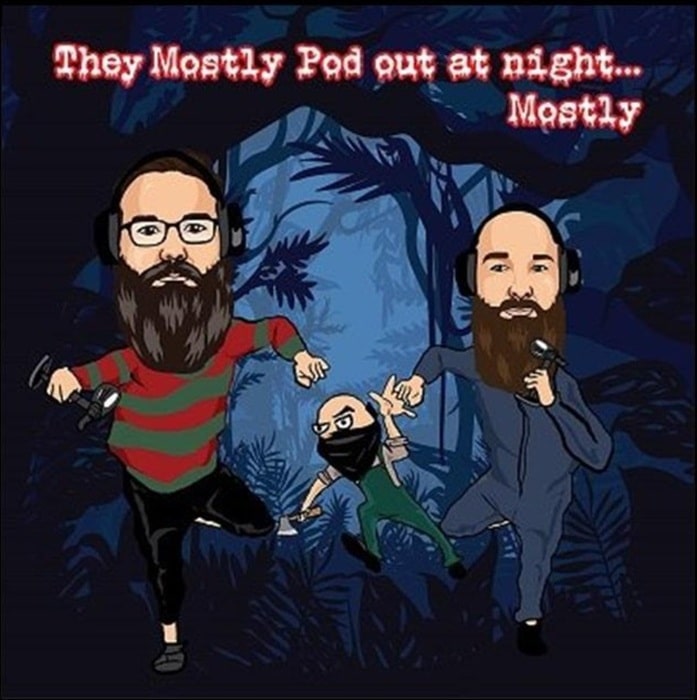 They Mostly Pod Out at Night, Mostly, hosted by Graveyard and Salem
They Mostly Pod Out at Night, Mostly, hosted by Graveyard and Salem
One of the best parts of my Black Gate side hustle is the cool people we get to meet, and there’s nothing more exciting than connecting with those who are most definitely “our people.” I am embarrassed to admit that the Fall Days of the Dead show in Chicago last November was my first encounter with the geniuses behind the podcast They Mostly Pod Out at Night, Mostly, who go by the monikers Graveyard and Salem. And after all, who doesn’t love an Aliens reference?
They Mostly Pod Out at Night, Mostly is a weekly podcast dedicated to all things horror. Each episode features in-depth discussions, covering a range of topics from classic and contemporary horror films to broader themes within the genre. The hosts provide insightful analysis, engaging reviews, and lively conversations that appeal to both casual viewers and die-hard horror enthusiasts. Their passion for horror is on full display as they explore the intricacies of various movies, offering listeners a comprehensive understanding of the genre’s evolution and impact.
Since meeting them in November I’ve become a regular listener, discovering yet another dark and intriguing corner of the horror subculture, and last night I had the honor of being a guest.
Honestly, I had mixed feelings about doing this. Though I loved what I had seen since becoming a fan of TMPOaNM, I am far more comfortable behind the keyboard than in front of a webcam. I have my own horrors of freezing up or saying something stupid, not to mention the fact that for all my many years at Black Gate I have determinedly remained out of any pictures or videos associated with Goth Chick News.
Still, the draw was strong, and the host “Graveyard” (aka Matt Van Bodegraven) went to great lengths to make me feel comfortable. He had done his homework on Black Gate and Goth Chick News so the whole event really felt like “coffee between friends” as he promised.
Check it…
For his part, Van Bodegraven is a multifaceted figure in the indie horror genre, recognized for his work as a writer, director, actor, as well as podcast creator and co-host. In the realm of filmmaking, Van Bodegraven has contributed to several projects. He is known for The Murder of the Monster (2024), The Ruck March (2025) as well as Vampyre and Tahoe Joe 3: Concrete Wilderness both in pre-production.
He is also the producer of the upcoming ‘found footage’ horror film The Fairfield County Four, directed and written by Joshua Brucker for Horror Dadz Productions.
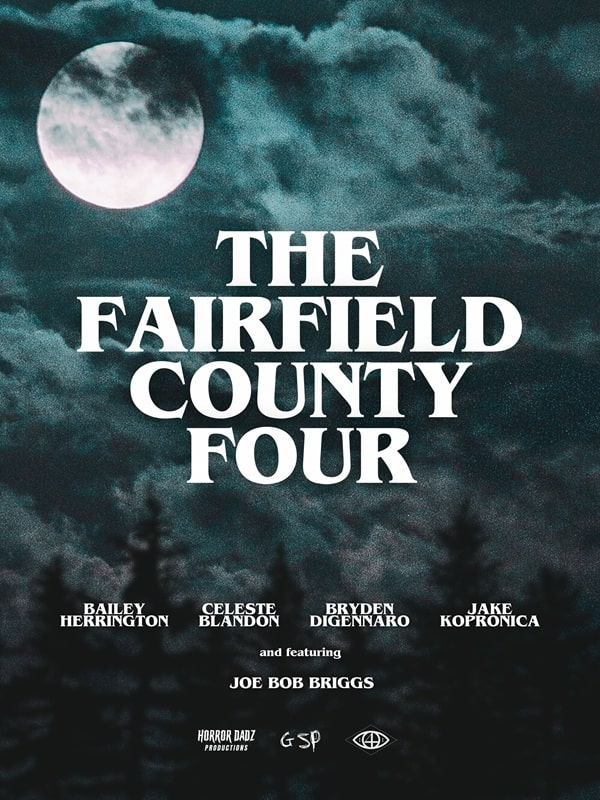 The Fairfield County Four (Eye4Eye Productions/Gray Sky Pictures)
The Fairfield County Four (Eye4Eye Productions/Gray Sky Pictures)
The narrative follows four individuals — Emma Grove, Amy Hanson, Randy Farris, and Peter Moore — as they venture into the Connecticut woods to investigate the legend of the Wolf of Fairfield County. Their subsequent disappearance leads to the discovery of their recovered footage, unveiling the chilling events they encountered.
As of now, The Fairfield County Four is in pre-production, with filming anticipated to commence in April 2025 and a release date yet to be announced. However, Van Bodegraven did promise to keep me updated so I can tell you all about the process of bringing an indie film to life. For a glimpse into the eerie atmosphere, you can watch the campaign teaser below:
While we wait, definitely check out They Mostly Pod Out at Night, Mostly, for entertaining insights into the horror genre. A huge thank you to Graveyard and Salem for creating such a memorable experience, and one that is truly unique in the Goth Chick universe.
Black Gate photog Chris Z and I are off to the spring version of Days of the Dead on Friday, so watch this space.
Spotlight on “The Fantasies of Future Things” by Doug Jones
In The Fantasies of Future Things, two men in Atlanta reconcile their human dignity against…
The post Spotlight on “The Fantasies of Future Things” by Doug Jones appeared first on LitStack.
7 Author Shoutouts | Authors We Love To Recommend
Here are 7 Author Shoutouts for this week. Find your favorite author or discover and…
The post 7 Author Shoutouts | Authors We Love To Recommend appeared first on LitStack.
You Are Cordially Invited to a Dinner Party in Hell: The Exterminating Angel
Social interaction is a minefield, isn’t it? Whether it’s gathering with the family for the holidays, relating to people at the workplace, or making small talk with the checker at the supermarket, any encounter with other people, no matter how casual or seemingly benign, is fraught with uncertainty and even, sometimes, menace. That may be why such interactions have so often been depicted as a form of combat. (It may also be why the trend towards “contactless” social transactions that reached warp speed with the advent of COVID isn’t going anywhere, but just continues to gain ground even as the Coronavirus era recedes.)
Of all the opportunities for social victory and defeat, triumph and humiliation, the party may be the most hazardous, but no party has ever been such an ordeal as the one endured by the hapless dinner guests in Luis Buñuel’s merciless 1962 nightmare, The Exterminating Angel (in its original Spanish, El ángel exterminador).
Filmed in Mexico and set in a “wealthy district” in an unnamed country (Roger Ebert declares that it’s Spain and that the movie is an attack on the regime of Francisco Franco, but I know of no statement by Buñuel that places the film so specifically or that defines its meaning so narrowly), The Exterminating Angel is the blackest of black comedies; I have no doubt that it would have made the chap who invented the rack and thumbscrews giggle uncontrollably.
Buñuel was one of the original cinematic surrealists, beginning his career in the mid 1920’s and earning his first fame — or notoriety — with two films made in collaboration with Salvador Dalí: that bane of unsuspecting college film students, Un Chien Andalou (1929), with its sudden, shock shot of an eye being sliced open by a razor blade (it was actually a cow’s eye) and 1930’s L’Age d’Or, which provoked scandal and rioting with its unbridled attacks on the Catholic Church.
Buñuel spent the next three decades bouncing between his native Spain, the United States, Mexico, and France, all the while producing work that was unconventional, to say the least. This period culminated with The Exterminating Angel, a film which inaugurated his final and greatest phase, a period which saw him produce his subversive masterpieces Belle de Jour, The Discreet Charm of the Bourgeoisie, The Phantom of Liberty, and That Obscure Object of Desire.
The Exterminating Angel opens on a beautiful and tranquil night on the Calle de la Providencia, an elegant, upper-class street, as Edmundo Nóbile (Enrique Rambal) and his wife Lucia (Lucy Gallardo) return from an evening at the opera, bringing with them seventeen guests, artists and professional people whom they have invited to join them for a post-performance dinner party. As the gay and sparkling group walks in the luxurious mansion’s front door, the Nóbile’s large domestic staff is rushing out the back; spurred by some obscure impulse that they scarcely understand, cooks, maids, and servers all flee into the night with no intention of ever returning.
Soon the only ones left are several sheep and a bear that the hostess is planning to use for some strange and never-to-be-enacted entertainment, and the Nóbile’s butler, Julio (Claudio Brook), whose total identification with his employers apparently inoculates him against the “running sickness” that is affecting the other servants.
The festivities begin in the time-honored way — the guests sit around the huge table, and oozing well-mannered malice, lean toward their neighbors and cheerfully gossip about the other people at the party, the sexual proclivities and perversions of their “friends” being an especially popular topic. (Other people’s medical conditions are also freely discussed, and an army colonel casually confides to the woman next to him that he doesn’t give a damn about the Fatherland he ostensibly serves.)
After Julio has served the meal, the group repairs to the spacious drawing room, which is only separated from the dining room by an open archway (which looks suspiciously like a theater proscenium), where one of the guests entertains everyone by playing a classical piano piece. More socializing ensues, masks of politesse and good breeding barely concealing the contempt and jealousy that lie beneath. (More than the usual spite and backbiting are hiding behind the polished social surface, however; during the piano recital, a woman opens her purse and has to dig beneath its other contents to reach her handkerchief. What has this elegant society lady brought with her? Lipstick and a compact? No, the feathers and feet of a chicken, the elements of a Cabbalistic ritual.) Finally, as the hour grows late, the partygoers begin to gather coats and purses, in preparation for their leave-taking. Only…
No one leaves. A few people hesitantly walk up to the archway leading to the dining room, which they must pass through in order to reach the cavernous entry hall and the front door, but they pause at the threshold, seemingly unable to take a step further. They stand bemused, expressions of confusion and even fear flickering across their faces, like skydivers at the door of an airplane who suddenly realize that they’re not wearing parachutes (or people standing at the brink of “The undiscovered country from whose bourn / No traveler returns”, perhaps?) They mutter a few weak justifications for staying just a little longer, and retreat back into the drawing room.
It soon becomes obvious that no one is going to leave, as people settle down for the night on couches (the lucky ones), in chairs, or on the floor. At first, the Nóbiles are outraged at this shocking breach of etiquette, but when they realize that they too are powerless to walk out of the drawing room, they find their own places to bed down for the night.
In the morning, Julio wheels in a tray with some breakfast… and finds that he too cannot leave the drawing room, and the new day has brought no change for anyone else, either — no one can leave. The group fumblingly tries to figure out what is happening; almost as frustrating as their inability to leave the room is their inability to understand why they cannot leave the room. Dr. Carlos Conde (Augusto Benedicio), the party’s leading rationalist, counsels that only “dispassionate analysis” can solve the problem, but no one seems much interested in that approach, not that there’s any indication that it would work if they tried it. In the meantime, people are making what arrangements they can — a closet in which large ornamental vases are stored becomes the de facto bathroom, and a pair of young lovers finds another closet where they can be alone; Buñuel allows you to imagine for yourself exactly what they’re up to in there.
As the days pass, territory is staked out, accusations are made and recriminations are hurled, and hunger grows. The lower-class Julio takes to eating paper as he did when a schoolboy and recommends it to the others; it’s better than nothing. An ornamental axe is used to chop through the wall to get to a water pipe; anarchy briefly reigns when water spurts from the pipe, but order is quickly restored — ladies first.
As the prisoners wonder why no one has come to rescue them, we are able to see outside the mansion, where police and crowds of onlookers have gathered, powerless; the same strange force that prevents exit also prevents entrance.
Inside, some react with hysteria, some with lethargy; some fight to maintain hope, some give way to despair. Some people cling to rationality while others call on occult powers, seek help through Masonic rituals, or promise a special mass for their deliverance. All the while, death is a force to be reckoned with inside the house just as it on the outside; lacking his medication, one of the older guests who was in poor health dies after the first night. (Just before the end, he mutters, “I’m happy I won’t see the extermination.”) They put him in the lovers’ closet, which is only fitting, as the pair — who were to be married later in the week — eventually commit suicide together in their trysting place.
An overpowering stench from the improvised lavatory (and morgue) and sweaty, unwashed bodies soon makes the air in the crowded room fetid and foul, and though they can toss their trash into the dining room (despite not being able to enter it), after a few days the drawing room is a filthy, cluttered shambles. Under these conditions, the thin veneer of civilization flakes off as people grate against each other physically and emotionally. Insults and fists fly, and the last tattered remnants of civility begin to disintegrate.
When the erstwhile members of the upper crust are approaching the last extremity, starvation is fended off when the animals escape from the kitchen. While the bear roams the upper floors, emitting eerie moans and cries, the sheep providentially trot into the drawing room; whatever sardonic divinity presides over this hell, he is at least willing to provide manna for his erring children. A fire is made from smashed furniture and soon roast mutton is being devoured by people indistinguishable from their primitive ancestors, who also squatted around open fires, eagerly tearing meat off of bones with their teeth.
Full stomachs only sharpen the edge of the guests’ desire to escape their prison, however, and a group of women (among them the devotee of Kabbalah) begin to push the idea that only a sacrifice — a human one — will free them. Who should the victim be? Who better than their host, the man who got them all into this mess with his impertinent dinner party invitation, Edmundo Nóbile? (Who, it must be said, has lived up to his name by comporting himself with more dignity and self-control than almost anyone else.) Some oppose this move, the ever-reasonable doctor most prominent among them (for his pains, someone shouts that they should get rid of him too) and the two sides, those for human sacrifice and those against it, wind up wrestling in the middle of the ruined room.
Just as the pro-sacrifice faction seems to be getting the upper hand and someone is reaching for the same knife that was used on the sheep, Nóbile tells them all that it won’t be necessary — taking a pistol from a drawer, he says that he can easily solve their problem for them. But before he can use the gun on himself, one of the women, Leticia (the wonderful Silvia Pinal, a Buñuel regular) tells everyone to stop where they are — she has realized that are all in the exact same places they occupied when the nightmare began, countless ages ago. If everything is repeated — positions, music, words, gestures, might that not free them from this spell? (Buñuel has slyly prepared for this by repeating several shots in the film; for instance, the shot of the guests first entering the house, along with the accompanying dialogue, is shown twice in succession. The only difference is a slightly different camera angle. Buñuel claimed that there are about twenty of these repetitions in the film.)
Everyone (except the dead) exactly repositions themselves as they were that unlucky night. The last few bars of the piano piece are played, followed by the same words that were spoken, and the doors of the sorcerer’s castle (“after all, this is not a sorcerer’s castle” someone rashly declared after the first night) are miraculously unlocked, and the captives are free. They immediately sense that whatever was restraining them has disappeared, and they ecstatically rush out the front door to meet the people waiting outside, who are also now freed to run to meet them. (Even the servants are there, seemingly drawn back by the same force that impelled them to run away.)
The curse has been lifted and the evil dream can fade from memory as all dreams do.
Well, if you think that, you don’t know Luis Buñuel. Of course, this deliverance is illusory; the torture master has withdrawn the knife only to reinsert it, merely repositioning the blade for the final, fatal twist.
The last scene of The Exterminating Angel shows all the dinner guests, again clean and fresh, immaculately groomed and expensively dressed, gathered together in church along with hundreds of other worshippers, attending the special mass that they promised to celebrate if they were saved from their ordeal.
As the service ends and the bells toll, the priests start to walk out of the nave… and stop.
They cannot leave, and neither can anyone else; they all stand paralyzed, new captives and old alike unable to walk through the door in front of them, and not long afterward, as panic mounts inside the church, shouts are heard from the outside, where mounted police are clashing with a large crowd. Rioters or the merely curious? Does it matter? The disorder and chaos that leaked from the human heart into an elegant upper-class drawing room has now overflowed into the wider world, spreading through the streets like a plague.
But have no fear; the degraded human race, corrupt and corrupting, will be looked after. The final shot of this extraordinary film shows a large flock of sheep, placidly trotting through the doors of the church while the city outside echoes with screams and gunfire. FIN.
The Exterminating Angel is one of the greatest films ever made, bursting with resonant, unforgettably suggestive images — a bear climbing the pillar of a chandeliered hall, crying with what sounds like anguish; sheep roaming up the wide stairways and through the deserted rooms of a richly-appointed mansion; ragged people listlessly standing around in the shattered ruins of what was once an elegant drawing room, hopeless as damned souls in hell; Nóbile and Leticia sitting with a sheep between them — as Leticia blindfolds the animal and hands Nóbile a knife, the doomed creature tenderly lays its head on its executioner’s shoulder. (Buñuel later said he wished that he had left the animals out of the film, because then he would have been able to make his people resort to cannibalism. Fun guy, that Luis.) Though there are a few other works it brings to mind (Jean-Paul Sartre’s play No Exit, which came before the film, and J.G. Ballard’s novel High Rise and Jean–Luc Godard’s film Weekend, which came after) The Exterminating Angel is very much its own thing, a bracingly original achievement, a ticking time bomb placed under the padded chairs of the complacent.
What is the meaning of this savage allegory? Does it say that hypocrisy and malice constitute the irreducible baselines of human behavior? That the comfort and luxury that we almost all desire are nothing but degrading prisons? That life is defined by its frustrations? (Later, in The Discreet Charm of the Bourgeoisie, Buñuel plays a variation on the impediment faced in the earlier film; in Discreet Charm the people of the privileged class can go where they want, but every time they sit down to dinner, something prevents them from eating; they are never allowed to complete a meal.) Does it say that the world is nothing but a desert island where we are all shipwrecked? (In 1954, Buñuel had filmed his own version of Robinson Crusoe.) Is it about the loss of belief that can suddenly undermine the most powerful regime? (Buñuel didn’t live to see the Soviet Union collapse overnight, but if he had, I can’t imagine that he would have been very surprised.) Is it a parody of the Book of Exodus? (When the Destroying Angel passed over Egypt, the Children of Israel couldn’t leave their houses.) Is it a monument to misanthropy, a horror movie in which the monsters are other people?
Hell, maybe if you could have administered a truth serum to the cagey Spaniard, he would have told you that the movie isn’t about the people at all — it’s about the sheep.
All respect to Roger Ebert, but whatever this singular film is, it has to be more than just a declaration that under Francisco Franco, Spain was oppressed by a corrupt and evil government. We know that already, and having grasped that fact, there’s nothing more to add. But The Exterminating Angel is deep enough to convey that specific meaning and many, many more. Like all the greatest works of art, it’s almost limitlessly expansive; it contains more and means more every time you see it. (Watching in 2025, it’s hard not to attach a meaning to it that it couldn’t have had for its director or original audience in 1962; the film works perfectly as an allegory of the anxiety and isolation of the COVID era.)
In watching this eccentric masterpiece, you may find yourself appalled, shocked into bitter laughter, filled with pity and dismay at the irremediably tainted human race and its benighted condition. What you won’t be is bored or dismissive; you’ll have no doubt that you’ve seen something absolutely unique and uncomfortably pertinent to the human dilemma, and you’ll find yourself turning it over and over in your mind long after the final credits have rolled, looking for a way out.
Really, what more could we poor, stupid sheep ask for?
Thomas Parker is a native Southern Californian and a lifelong science fiction, fantasy, and mystery fan. When not corrupting the next generation as a fourth grade teacher, he collects Roger Corman movies, Silver Age comic books, Ace doubles, and despairing looks from his wife. His last article for us was The Beating Heart of Science Fiction: Poul Anderson and Tau Zero
Review: Last Chance to Save the World by Beth Revis

Buy LAST CHANCE TO SAVE THE WORLD
Read the review of Book One: Full Speed to a Crash Landing
OFFICIAL AUTHOR BIO: Beth Revis grew up in the Appalachian Mountains with a cemetery in her backyard, which is probably why she prefers her stories to be dark and full of twists. She’s the New York Times bestselling author of the Across the Universe trilogy, which has been translated into more than 20 languages. Beth lives in a house full of boys—her husband, son, and two massive dogs—and she forces them all to watch reruns of Firefly and Doctor Who. Visit her at bethrevis.com.
FORMAT/INFO: Last Chance to Save the World will be published on April 8th, 2025 from DAW Books. It is 133 pages and available in hardcover and ebook formats.
OVERVIEW/ANALYSIS: It's a race against time as con artist Ada pulls off her most daring escapade yet. The target: the launching facility of a fleet of nanodrones during one of the most publicized (and secured) events in the galaxy. The mission: upload a code that will delete the secret planned obsolescence code in the nanobots planted by the company that built them, ensuring the bots fulfill their mission to clean the environmental damage on Earth. Ada's convinced government agent Rian to help her, but can she count on him not to betray her at the last minute?
Last Chance to Save the World is a fun and frenetic finale, even if it does lose a bit of the chemistry between its leads along the way. While all the books in this novella series revolve around individual capers, they've all been part of one overarching arc that we see play out in this last adventure. Once again, we're treated to the unreliable narrator of Ada, who doesn't always tell the reader everything that's going on. Is everything going according to her plan? Only Ada knows until the final chapter plays out.
I do love seeing a well-executed plan, and there's plenty of that here. Seeds planted in previous books blossom into fruition for the finale and there's always one more ace up Ada's sleeve. It's a slick Hollywood heist film ending where the real bad guys get their just desserts.
But I also love seeing evenly matched opponents in these kinds of stories, and that's where Last Chance to Save the World fell a bit flat. In the first book, Rian was a worthy foil to Ada, with his own counter-moves that she had to outfox. Here, he's little more than helpless eye-candy. Sure, we're teased that he has a plan of his own, but he never surprises Ada or has the upper hand. She's always one step ahead and we know it, which takes away the chemistry between the two characters. The heat in the romance came from the danger of knowing that Rian COULD outsmart Ada if she's not careful, and that's just not showcased here.
CONCLUSION: From start to finish, the Chaotic Orbits novellas are a rollicking fun time that will leave you grinning. Now that the trilogy is complete, readers can watch Ada's plans unfold from start to finish in just a few sittings. I will always be a fan of Ada's chaotic energy, her constant shifting of conversational topics and goals designed to put her opponents on their back feet. If you're looking for a quick and easy entertaining adventure, these are just the reading snack to bite into.
Book Review: Once Was Willem by M.R. Carey
I received a review copy from the publisher. This does not affect the contents of my review and all opinions are my own.
Mogsy’s Rating: 3 of 5 stars
Genre: Horror, Historical Fiction
Series: Stand Alone
Publisher: Orbit (March 4, 2025)
Length: 320 pages
Author Information: Website | Twitter
I think I may be in the minority on this one, but while I generally love the dark, thought-provoking works of M.R. Carey, I struggled to get into Once Was Willem. Granted, the novel was another testament to the author’s storytelling abilities, tackling a medieval horror fantasy told in a unique narrative voice. However, the style and structure of the book also made it difficult to parse at times, and this is something you have to get used to, or—if you’re like me—you just can’t.
Set in the mid-12th century, the story begins in a poor peasant village where the untimely death of a young boy named Willem leads his parents on a misguided attempt to bring him back. They turn to a powerful sorcerer named Cain Caradoc, who promises that he can help resurrect their son. However, what he failed to mention is that he will also be taking a piece of Willem’s soul as his price, and that the boy will come back as a grotesque shell of who he once was, becoming a monstrosity lingering between life and undeath. Horrified by the creature that once was their beloved son, his mother and father are joined by the rest of the villagers in driving Willem out.
Exiled, Willem makes his home in the surrounding woods, but he finds he is not alone. Others like him have taken refuge in the wilderness, among them individuals deemed oddities who have also been cast out—shapeshifters, elemental creatures, monsters, and spirits. Together, they form a band of seven to keep each other safe, eventually bringing the fight to Caradoc, whose nefarious plans have led him to set his sights on more than the souls of dead children. As the sorcerer’s magic threatens the villages and the residents turn to those they’ve cast out for assistance, Willem and his companions must confront the enemy in a final battle that not only determines the fates of the villagers but of the afterlife itself.
To be honest, although I appreciated the folklore and found family themes of Once of Willem, the book starts off slowly, and its ponderous pacing is further exacerbated by the archaic writing style. Indeed, the novel’s distinct narrative style is a double-edged sword, at once its greatest strength and greatest weakness. The story reads like a memoir told by Willem himself, but much like his physical body, his mind is also neither here nor there. He jumps around, meanders, inserting fragments of memory or asides at seemingly random places. Like the old-timey, period-appropriate prose, Willem’s voice makes this story feel authentic and immersive, but it is also very demanding on readers.
That said, Willem’s character arc is deeply moving, driven by his relatable need for acceptance and purpose. Afterall, everyone understands what it means to belong and to be accepted. It is universal, and it is human. Brought back to life only to be discarded by his own people, Willem also struggles with the meaning of his existence. Later, he finds solace in his group of companions that he meets in the wilderness. Bound not by blood but by a shared understanding, their camaraderie is truly the heart and soul of the story, bringing warmth and depth to an otherwise bleak tale. These characters shine whenever they are on the page, and unfortunately, their togetherness feels underused, making me wish we saw more of those connections.
In various reviews, I’ve seen Once Was Willem described as medieval Frankenstein meets The Magnificent Seven. Given its elements, I have to say these are good comparisons, and you should definitely check it out if you are interested in a unique blend of horror, folklore, and adventure. However, it can also be a frustrating read, especially if you prefer your stories to be more structured and organized. The dense prose can also present a challenge, and in fact, I found it more enjoyable after a while to switch to the audiobook, which made it easier to get into the story. Ultimately, I was glad I finished this, but it doesn’t quite reach the heights of M.R. Carey’s more readable books.
![]()
![]()
The Impact of Fortitude in Charlotte Whitney’s “A Tiny Piece of Blue”
LitStack is excited to present Allie Coker’s review of A Tiny Piece of Blue, Charlotte…
The post The Impact of Fortitude in Charlotte Whitney’s “A Tiny Piece of Blue” appeared first on LitStack.
SPFBO Finalist Review: Wolf of Withervale by Joaquin Baldwin

ABOUT THE AUTHOR: Joaquín Baldwin writes epic fantasy with a queer touch. As a multidisciplinary artist, he’s been recognized for his work in cinematography, photography, 3D design, and illustration, and his animated shorts have won over 100 awards. He unadvisedly decided that writing novels was the next thing on his list. While at Disney, he worked on films such as Zootopia, Encanto, Frozen and Moana. He spends an inordinate amount of time crafting the complex world of the Noss Saga. Visit him at joaquinbaldwin.com.
Wolf of Withervale links: Amazon, Goodreads
ESMAY
Wolf of Withervale is pitched as “An ambitious, sweeping saga—as epic as it is queer.”, and I honestly think that sums it up more perfectly than I ever could. It’s got ancient relics, mystifying magic, shape-shifting powers, diverse races and rich cultures, wholesome found family vibes, epic quests, all the queer love, and more mystery, intrigue and heart than you ever knew you needed.
As with any good start to an epic fantasy series, Wolf of Withervale is quite the slow-burn set-up book, but not in the boring way. From the moment I met Lago, I found him to be an extremely likeable and compelling protagonist, and I absolutely loved exploring all the mysteries and intricacies of the world together with him. I mean, I always love me a good morally grey anti-hero, but sometimes you just want to follow genuinely good people doing their best to do good things for the world and the people around them, and that is exactly what Baldwin offers.
Don’t get me wrong, Wolf of Withervale definitely has some dark aspects and there is no lack of conflict and stakes, but somehow I found this entire story to just be inexplicably cozy (which the wonderfully narrated audiobook probably also contributed to). For me, the nuanced interpersonal relationships and authentic personal inner journeys just kept me quite engaged, and I loved the found family vibes that started to develop between these loveable misfits. I mean, Alaia truly deserves the award for best friend in the world, and Bear is just the goodest boy ever.
I really enjoyed that they each have such a different background, because that allowed us to naturally get to learn all about this fascinating world as they share their own experiences and knowledge. And what a world it is! To me, the world of Noss is up there with The Wheel of Time or Stormlight Archive in both the breadth and depth of the world building, and I found myself fascinated by all the post-cataclysmic mysteries, the intricacies of the tense political landscape, and the level of rich diversity, be that on a racial, cultural or sexual level.
I mean, there is absolutely no denying that there were quite a few overwhelming info-dumps that went in one ear and out the other for me, but for the most part I think Baldwin actually did a pretty good job of balancing and interweaving the world building with the characters’ personal journeys. Especially the mysterious influence that the ancient wolf-like mask relic had on Lago kept me glued to the page, and I loved how his new-found shape-shifting powers and his transformative journey highlighted the story’s core themes of human connection, nature, empathy, belonging, and queerness.
And speaking of queerness, Wolf of Withervale is just hella gay, and I was mostly all here for it. That said, although I enjoyed the soul-deep connection between Banook and Lago, I am personally not the biggest fan of age-gap romances, and especially the whole ‘cub’ as a term of endearment made me feel deeply uncomfortable. Moreover, while I really liked Baldwin’s lush and descriptive prose in most sections of the story, I personally found the blunt and graphic way that most of the explicit scenes were written to be a bit off-putting.
Still, those quibbles didn’t end up hindering my enjoyment all that much, and I was just happily plodding along on this epic adventure. Sure, the pacing is quite wobbly, and I can’t sit here and pretend that I was really invested in the macro plot with the escalating war, but somehow I was just along for the ride (which the audiobook once again probably also helped with). And between the occasional intriguing non-Lago POV chapters and the ominously enticing (if slightly abrupt) ending, I am quite curious to see what Baldwin has in store in the rest of the Noss saga.
If you are sick and tired of all the bleak worlds filled with morally gray anti-heroes, then Wolf of Withervale will be a wonderful breath of fresh air. It’s somehow both comfortingly familiar and refreshingly diverse, and I can’t recommend it highly enough to anyone who likes their fantasy epic, slow, indulgent, character-driven, and unapologetically queer.
ŁUKASZ
The Wolf of Withervale is a curious beast. On one hand, it’s a dazzling display of creativity, worldbuilding, and queerness. On the other, it can feel like a bit of a slog if you don't have patience for dense storytelling, detailed romances, and some eyebrow-raising narrative choices.
The story follows Lago Vaari, a young outcast who gets a magical wolf mask that changes the course of his life and his very identity. Others want it too, so Lago has to run from an empire hungry for mask's power. The setup is fantastic, and aetheric magic system is a standout feature (well thought-out, combines science and magic, nerdy in the best way.)
But here’s the rub: while the first half moves briskly, the story slams the brakes about midway through. The focus shifts to a romance between Lago (now going by his wolf-form name, Sterjall) and Banook, a bear shapeshifter and literal “bear” in gay culture. Now, I'm sure some readers will be here for this relationship and graphic sex scenes, but to me it dragged the pace down and sidelined the main plot.
Still, there’s plenty to appreciate here: Baldwin’s passion, detailed world, the stunning illustrations, and the depth of thought behind every detail. The Wolf of Withervale is queer, nerdy, and unapologetically itself. It’s not perfect but it’s undeniably memorable.
A subjective opinion: with the help of a berserker editor and some merciless tightening, this could be a true standout. As for today, I would say it's 100 -150 pages too long.
Anyway, give it a try if you’re in the mood for something ambitious and out of the ordinary.
OFFICIAL SPFBO SCORE

Teaser Tuesdays - A House with Good Bones

Live ladybugs and squashed dead ones tumbled to the floor.
(Okay, I admit it, even as a dedicated insect aficionado, this was wavering between alarming and gross.)
(page 80, A House with Good Bones by T. Kingfisher)
---------
Teaser Tuesdays is a weekly bookish meme, previously hosted by MizB of Should Be Reading. Anyone can play along! Just do the following: - Grab your current read - Open to a random page - Share two (2) “teaser” sentences from somewhere on that page BE CAREFUL NOT TO INCLUDE SPOILERS! (make sure that what you share doesn’t give too much away! You don’t want to ruin the book for others!) - Share the title & author, too, so that other TT participants can add the book to their TBR Lists if they like your teasers!
SPFBO Finalist Interview: Joaquín Baldwin, the author of Wolf of Withervale

ABOUT THE AUTHOR: Joaquín Baldwin writes epic fantasy with a queer touch. As a multidisciplinary artist, he’s been recognized for his work in cinematography, photography, 3D design, and illustration, and his animated shorts have won over 100 awards. He unadvisedly decided that writing novels was the next thing on his list. While at Disney, he worked on films such as Zootopia, Encanto, Frozen and Moana. He spends an inordinate amount of time crafting the complex world of the Noss Saga. Visit him at joaquinbaldwin.com.
Wolf of Withervale links: Amazon, Goodreads
Thank you for agreeing to this interview. Before we start, tell us a little about yourself.
I was born in Paraguay and came to the USA to study art right after finishing high school. I’ve always been obsessed with nature, with light, and with story. The Noss Saga became this single big project where I could dump all my skills and passions, from the storytelling side, to creating maps, sculptures, photographs, illustrations, conlangs, and a whole bunch of other nerdy things. I’ve always spent my free time doing art anyway, but I was bouncing around without a particular focus, and this is bringing it all into something cohesive.
Do you have a day job? If so, what is it?
I’m an animator at Walt Disney Animation Studios (well, I’m a layout artist, sometimes director of cinematography, focusing on the camera work for animated features, which involves animating as well as other things). That’s been the day job for over a decade. I got that job thanks to my animated shorts, which were quite popular for a time and got lots of attention in the industry. As much as I love animation though, I do enough of it daily, so in my free time I want to do anything but that.
Who are some of your favorite writers, and why is their work important to you?
This list always changes depending on mood, but I draw inspiration from fiction and non-fiction.
On the fiction side, the obvious is Tolkien, but also Neil Gaiman, Stephen King, N.K. Jemisin, Jorge Luis Borges, Philip Pullman, Kim Stanley Robinson, Octavia Butler, and Patrick Rothfuss. I enjoy personal stories that dig into deeper meanings but also that transport us into well thought-out worlds, into magical places that are imperfect but beautiful.
On the non-fiction side, my biggest inspiration is Carl Sagan, but also Richand Feynman, Douglas Hofstadter, John Muir, and Robert Macfarlane. Anyone reading the Noss Saga might pick up on these influences—the entirety of it is filled with a sense of wonder toward nature, with a yearning to understand the universe.
What do you like most about the act of writing?
I enjoy the unexpected when I have a perfect plan, and then suddenly a character decides to do something different from what I intended, and they become their own living being that evolves into something unique, uncontrollable. The same goes with story itself, how the plot and even themes end up shifting as you write, and you find more depth and just let it happen. Letting it happen and entering that state of flow is amazing (if I remember to eat, at least, otherwise I realize it’s late at night already and I’m hangry).
Can you lead us through your creative process? What works and doesn’t work for you? How long do you need to finish a book?
I’m a bit obsessive, so I ended up writing 2,000 words average for the first year, till I reached a million words for the six books of the saga. To me (and this is just to me, everyone has their own way), making sure I wrote every day was important, even if it was just a few hundred words. Otherwise I could lapse into an undefined break and lose the flow. But at the same time, I do not like setting limits such as a specific word count limit, otherwise I’d be writing trash just to match an abstract number.
Another thing that was important to me was to write just to myself. I could not sustain writing this much while thinking of what people might like or not like, what would sell, what’s marketable. Fuck that. This is my passion project. I’ll make it the best thing I can, but it has to come from my heart.
What made you decide to self-publish Wolf of Withervale as opposed to traditional publishing?
I actually sent queries out to agents! But this was way before the manuscript was ready, way before I learned how to write a proper query, and before I learned how vicious the publishing industry can be. I was brand new to all this. In hindsight, I am so glad that I didn’t get any responses. If Wolf of Withervale had been published back then, it would not have been polished enough, it would’ve had some plot holes I could no longer fix, and it would’ve likely changed too much in the editing process in order to make it marketable to wider audiences, to the point it would not be the kind of book I wanted it to be. I’m much happier self-publishing. I get so much more control, I get to deal with the fans in a more personal way, and I can plan ahead a lot better, with my own timeline. I’m also publishing these quite fast (about every 8 months), while with trad pub I likely would’ve had to wait a decade to see the entire series out, and they could’ve always canceled it right in the middle and ruin it all. Self-pub forever <3
Contrary to many self-published authors, you went wide instead of being kindle exclusive. Why? Did it pay off?
I know my door-stopper books would do well in KU, but I despise Amazon and everything it stands for, and I have a huge respect for my readers no matter what platform or device they use to read or listen. I am probably losing a big chunk of money by not being in KU right now, but in the long run, it is about training the readers to buy direct, and once that scales up, it will compensate for the loss of income. Right now I’m still building the audience so it hasn’t reached that point, but it’s a long-term plan.
Another reason is that I never planned this project as a commercial one. I know it has commercial potential, but I will not focus my efforts that way or I’ll be trying to make money instead of making art. This way I have more control and I can deliver exactly what I want, and I’m not caged by an evil monopoly.
Your book is available in audiobook format. Can you share your experience producing it and a reflection if it was worth it?
Totally worth it! It’s been the most fun experience. Audiobooks are expensive, and it takes a while to make that investment back, but it’s something I always wanted to do. Not only did I get a killer narrator (Magnus Carlssen, who I love working with and who totally gets the mood and level of detail this world requires), but I also worked with a composer, Iain James Armour, who wrote the melodies that Magnus sings in a few spots of the book, and he also wrote the intro/outro for the audiobook as well, and is even working on a full album trilogy based on the books. This is a big project, and I wanted the audiobook to feel like its own complete piece of art, not just an additional format for consumption.
One thing I did not expect is how time-consuming the audiobook would be for me. I have to listen to so many recordings, provide notes, and use a tracking system we developed with Magnus to track the extensive amount of notes and rerecordings. But every time I get to sit down and listen to a new recording is wonderful.
Why did you enter SPFBO?
I currently have a passionate but small fan base. I need to branch out, and awards that are not exclusive to self-published books are nearly impossible to compete in since most of them are about popularity/visibility, something a publisher can handle with enough of a budget, but a single author could not. SPFBO was an award that came to my attention as soon as I got into this self-pub world, and I saw how some titles that won in previous years ended up reaching a much wider audience right away. To me, it’s about exposure, about finding people beyond my current circles that will enjoy this vast project. It’s also cool to keep track of the finalists and find new books to love.
How would you describe the plot of Wolf of Withervale if you had to do so in just one or two sentences?
When the wolf-like mask fell into the hands of young Lago, he could not guess at its powers. Now that the empire has scented the relic’s trail, Lago’s only hope of escape is to learn to wield the mask, uncover its secrets, and accept the change it brings.That’s the pre-written short blurb though. If I had to pitch it myself in an elevator I’d totally butcher it into something like, “It’s, um, about this kid who gets this cool mask, and like, magic and transformation, and like sexuality and all kinds of cool epic stuff. I made lots of maps! Did you see my maps?!?”
What was your initial inspiration for Wolf of Withervale? How long have you been working on it? Has it evolved from its original idea?
There are many ideas that coalesced into it, but the core that holds it all together came on October 3rd, 2020. I wrote a tweet that morning, which said, “Woke up at 4am with a breakthrough story idea, and makes me excited to start writing. It feels big, world-building big. I've never written anything long form, this could be it. Sending this tweet in the hopes I'll find it again a few years from now, when the story has taken form.”
I cannot tell you what that core idea was because it is massively spoilery, but it is what got me so obsessed. One month later, for NaNoWriMo (RIP, fuck AI “writers”), I began writing daily (I took that whole month to prep, outline, etc). My first draft was shit. My second one was decent. My eight or so was ready.
If you had to describe it in 3 adjectives, which would you choose?
Queer. Epic. Nerdy.
Is it part of the series or a standalone? If series, how many books have you planned for it?
It is a six-book series, all of which are written already, but in different stages of editing. Books 1 and 2 are out already (Wolf of Withervale and Masks of the Miscam). Book 3, titled Relinquished Realms, will be out early 2025 (we are working on the final edit/proofread now). Book 4 just went through all the beta readers (I need to sit with their notes and do an extensive edit) and books 5 and 6 are still with the beta readers and will require lots of work to clean up.
I published the first book only after I had already written all six. This allowed me to do retroactive edits to fit things better and to add lots of callbacks, setups, and payoffs that work through all six books. Each book averages around 190,000 words.
Who are the key players in this story? Could you introduce us to Wolf of Withervale’s protagonists/antagonists?
Lago Vaari is the protagonist, a young man who inherits the magical mask that kickstarts the adventure. He is passionate, studious, but also impulsive and a bit hot-headed.
Alaia is Lago’s best friend. She is an optimistic and opportunistic mine worker who keeps Lago in check, making sure his heart is in the right place.
The Red Stag is the main antagonist. Not really a spoiler, but there is more than one magical mask, and the Red Stag (a half human, half elk) has control of the mask of cervids, and wants control of the other masks.
There is also Ockam, a scout who comes to Lago’s aid when the empire finally catches up to him, and who becomes a kind of father figure.
And there’s a M/M love interest, a character whose name I won’t mention due to spoilers, who is my favorite character in the entire saga :)
Does your book feature a magic/magic system? If yes, can you describe it?
The magic system is tightly grounded in scientific concepts. I needed it to feel believable, particularly since we are already dealing with some impossible things like transformation. The system relies on the aetheric elements:
Imagine that some elements (Or perhaps all? Who knows?) have an “aetheric” variant, a kind that chemically reacts to other elements in the same way as expected, but they also have one particular extraordinary property. So, for iron you would have magnium (or “aetheric iron”), which provides magnetic properties to the metals it alloys with. For carbon you have soot, which is a sort of hallucinogen that allows you a glimpse into the connections between carbon-based lifeforms. Sulphur has a variant called brime, which constantly expels heat. To silver there is galvanum, which has electrical properties. And there are many more, including aether (the aetheric variant of hydrogen), which is [REDACTED, TOP SECRET]. Now imagine what it would be like to combine these precious and rare elements together, and you have an entire world of non-magical magic to explore.
Have you written the book with a particular audience in mind?
Yes. Me! But also any other queer nerds. I love geology, paleontology, chemistry, zoology, and I’m dropping all these passions into this series. It’s already finding a lot of fans among scientists and sci-artists. Furries are also a core audience, with the anthro/transformation themes being so prevalent, and with the themes of gender and sexuality being so intrinsic to the story. But overall, I first had to write it for myself.
What’s new or unique about your book that we don’t see much in speculative fiction these days?
The way sexuality is woven into the plot is rare, and one of the main reasons I wanted to write this story. Yes, there are a ton of books out there now with queer casts, but sexuality as part of the worldbuilding and development of the core plot is not common. The magical masks in the Noss Saga are a medium through which to express ideas of gender, of change, of finding one’s true self or selves. The sexuality of the characters is not merely incidental, it’s extremely consequential with how the plot flows and how the major themes develop.
There is also an exceedingly large number of illustrations and behind-the-scenes worldbuilding, all available for free in the extras pages for each of the books. This is not so uncommon, but I think the Noss Saga goes way beyond what one would expect to find for extras in how extensive and polished they are.(Łukasz, feel free to add any of the images from that extras page to your post. I think readers might enjoy seeing the world map in particular)
Cover art is always an important factor in book sales. Can you tell us about the idea behind the cover of Wolf of Withervale and the artist?
The artist is the wonderful Ilse Gort, who is just fantastic. I had her in mind since the very start, and I’m so happy she was willing to read the books and do such amazing art for the covers. I actually just happen to have written a detailed post showcasing the process of the book’s cover, including Ilse’s many sketches, so you can check those sketches out here.
Although I love doing the interior illustrations for my books, I think leaving the cover to someone like Ilse really paid off. She’s the best, I love how the covers turned out, and how the clean illustrations stand on their own as their unique pieces of art.
What are you currently working on that readers might be interested in learning more about, and when can we expect to see it released?
I’m working on the final edit of Relinquished Realms, Book 3 of the Noss Saga. I’m not naming dates yet, since I want the print, audio, and ebook versions released all at the same time, and planning that is tricky, but I’m aiming for early 2025. I’m also starting work in Zootopia 2 at Disney, which also comes out in 2025 :)
Thank you for taking the time to answer all the questions. In closing, do you have any parting thoughts or comments you would like to share with our readers?
Thank you!
I’d ask your readers to check out the other finalists in SPFBOX! I’m just getting to know some of the authors now, and just placed their books in my to-be-read list. Check them all out, and if you like their books, tell your friends about it—word of mouth is how indie authors find new readers.
Books.by – A Viable Amazon Alternative?
 Image by Gaertringen from Pixabay
Image by Gaertringen from Pixabay
Good afterevenmorn!
Let’s talk self-publishing. Particularly, print on demand options.
In this particular climate, I know a number of book buyers and independent and self publishers looking to make an impact by being more mindful of where they spend their money and with whom they do business. It is, however, incredibly difficult to do any kind of individual action, given the absolute chokehold Amazon has in the book space. Those of us who are self-published know it well. Amazon is where most book buyers go when shopping online. And it’s where a large number of independent publishers go to have their books printed and shipped. Print on demand is a great technology, especially for those of us who do not have the funds to do an entire print run, and no space to store the books in any case.
It’s perfect, too, because no book is wasted. Only the exact number of books sold are printed. There is no pulping of piles of unsold books. Paper is not wasted. I really like print on demand for that reason alone.
There are, of course, many other print on demand options. Nowhere is it written that one must use Kindle Direct (the print on demand arm of Amazon). However, Amazon has been such a behemoth for so long, it does seem like that if one has any hope of making a living from their self-publishing efforts, you must be on Amazon. Plenty of self-published writers make a very decent living on there, thank you very much.
 Image by Gerald Friedrich from Pixabay
Image by Gerald Friedrich from Pixabay
However, I, like many others (both buyers and publishers) do not like the way Amazon operates. We don’t like the way they treat their employees. We don’t like the way they treat their authors. We don’t like how they bully the little guy. Or what they do with the money we make for them. It has had me searching for alternatives for a long while now.
Draft2Digital is one. It operates the usual way; you upload the book and cover, decide which channels you wish to sell on, and Draft2Digital will print and ship off your books to all those markets. You can order author copies should you ever need a bunch for an event.They operate as both a printer and distributor, which is quite nice. They pay for this by taking a cut of the proceeds of each sale, in much the same way Amazon, and other options do.
Lulu and Ingram Sparks are a couple of others that are names with recognition. But there are a bunch of print on demand services. They all operate in more or less the same way. As a bonus, there aren’t any issues with the manner in which they treat their workers, near as I know. So they’re not a bad option if you’re looking for a print on demand option.
 Image by Dmitriy from Pixabay
Image by Dmitriy from Pixabay
Recently, I’ve seen another player jump on the scene. This is a new print on demand option that operates a little differently. Books.by is a print on demand service and online shopfront that works on a subscription model. Essentially, the author/publisher pays a yearly fee, and they get print on demand services as well as a shopfront for their physical books.
If used as the author’s online store, it could help in reducing website costs, which can get quite costly. Books.by has printers on practically every continent, making printing and shipping very quick and very easy. The website also boasts marketing tools available to booksellers, though I haven’t yet explored those and so don’t know if there’s the value in them the site claims.
The store fronts look nice and clean. It’s very easy to set up; extremely user friendly on the backend. Added bonus for some of us, the company, like myself, is Australian.
There are some pretty significant drawbacks, however. The first and most immediate is upfront costs. Part of the attraction of Amazon, Draft2Digital, Lulu, Ingram Spark and others is that you don’t require any money upfront. You can just upload the files and start selling. Sure, they tend to take a hefty cut, but the barrier to entry is incredibly low. With books.by, you must have the money upfront, and pay it yearly. However, the amount does not change. It’s not a percentage of your sales. It’s a flat fee (plus printing costs). The author gets to keep 100% of the profits. That can be very attractive; especially for those writers who sell at volume. Still, it’s very rare for anyone to be able to sell those kinds of numbers, especially if one is just starting out.
This may be something a publisher is willing to factor into the cost of doing business, and in the hopes that they grow large enough on the platform to justify that fee.
It will have to be noted that, as of the writing of this, books.by does not offer digital downloads. Less expensive to purchase, digital books are a great way for new readers to discover a new favorite author. The cost isn’t high, comparatively, making it an attractive option for buyers. It would be a really nice feature if they would offer downloads in multiple formats for buyers for those publishers who wish to offer them.
Perhaps that’s a feature that’s in the works for later. The company is relatively new, after all.
Discoverability is also a problem. Each subscriber gets a dedicated shopfront (with a pretty clever URL, actually: books.by/[publisher name]). But there isn’t really a buyer-facing site at all. Which means that someone can’t come to books.by and do a search for a title, author or publisher they way they can with Amazon. People coming to shop at books.by must have the publishers URL, or they’re just out of luck. Alas.
It is my hope that books.by will add that kind of front-end search function in the future so they can better compete with sites like Amazon. As of now, however, this is a considerable failing in my opinion.
 Image by Jose Antonio Alba from Pixabay
Image by Jose Antonio Alba from Pixabay
Do I have a books.by shop? I do! There is only one book on it at the moment, as I’m going through my back catalogue and updating the books before releasing them under my new-ish imprint. Of course, because I’m such an unknown outside of family and friends, I have sold all of one copy; nowhere near the volume required to justify the expense. I am one of those who is running at a loss, hoping that sales pick up enough eventually to justify the cost.
For all of my physical copies, I’ll be using books.by, as they’re a great alternative to Amazon, and I want to be more ethical about where I’m spending my money.
But I’m not one to put all of my eggs in one basket. I also use Draft2Digital for most of my distribution needs, and, yes, my books are still up on Amazon, available through KDP (one of the business practices I detest is the sneaky way Amazon tends to throttle sales that are distributed to them from another provider). Some people haven’t a choice and must use that market. I don’t want to deprive them of their options. I will, however, be directing people to buy from my ko-fi shop or my books.by shop when they can.
It’s not much. I’m just one writer/publisher. Amazon won’t miss my business, I’m sure. Particularly since I hardly sell at all. What I do won’t really matter. Still, it’s better than nothing, and I’m enjoying having options.
I would suggest for new self-publishers to (always) do their research and choose a platform that best suits your and your situation. It might not be the best idea to jump into books.by when you’re first starting out; not least of all because of those upfront costs and lack of discoverability. That might be something to consider more when thinking of opening your own online store… and even then, consider the lack of ebook options (which will hopefully change).
I do think books.by has potential, but they’re too young a company yet to put all one’s stock into.
Are there any new and excited self-publishing options out there that you’ve heard of? I’m sure folks at the start of their journey would love to hear about it. Sound off below!
When S.M. Carrière isn’t brutally killing your favorite characters, she spends her time teaching martial arts, live streaming video games, and cuddling her cat. In other words, she spends her time teaching others to kill, streaming her digital kills, and a cuddling furry murderer. Her most recent titles include Daughters of Britain, Skylark and Human. Her serial The New Haven Incident is free and goes up every Friday on her blog.
Monday Musings: Remembering My Gram
This past weekend marked my Gram’s birthday. I won’t tell you how old she would have been because, well, I’m not sure I can do the math. Old. Really old. She passed away in 1983, and at the time she was just shy of her 92nd birthday. I think. I’m pretty sure she would be, like, 134 now. I am also pretty sure she would be ticked at me for telling you how old she would be . . . .
Gram was a wonderful grandmother. She adored all of her grandkids and she doted on us in all the grandmotherly ways. She made a huge fuss over every achievement, she always wanted to hear all about our lives, our friends, our classes at school. I never knew my mother’s parents, and my grandfather on my father’s side was not really part of our lives growing up. But it didn’t matter, because Gram showered us with enough love for four grandparents.
 Clara Bartels was born in Amsterdam and came to the United States as a small child. Her father was a diamond cutter, and diamond cutters were in great demand in the diamond district of New York City. She grew up around the block from Jacques Cohen, who later in life changed the family’s last name to Coe, and whose father also was a diamond cutter who emigrated from Amsterdam. They would marry, have three kids, and then divorce, bitterly, at a time when divorce was not really something people were supposed to do.
Clara Bartels was born in Amsterdam and came to the United States as a small child. Her father was a diamond cutter, and diamond cutters were in great demand in the diamond district of New York City. She grew up around the block from Jacques Cohen, who later in life changed the family’s last name to Coe, and whose father also was a diamond cutter who emigrated from Amsterdam. They would marry, have three kids, and then divorce, bitterly, at a time when divorce was not really something people were supposed to do.
Gram endured a lot in those years. She raised three children by herself, when single mothers with children were expected to remarry with alacrity. She nearly lost my father to meningitis when he was a sophomore in college. The youngest of her kids, my Uncle Bill, died in France during World War II. But she was a survivor and much tougher than anyone would have thought just looking at her.
Clara was maybe — MAYBE — five feet tall. With shoes on. In a stiff tail wind . . . . She had dark hair early in life. When I knew her, she had beautiful, silky white hair. Her smile could power entire cities. Her laugh, which we heard frequently, sounded like a car engine struggling to turn over. She had a terrific sense of humor and loved to laugh when she wasn’t supposed to. Each year, we would go to my Aunt Jean’s house for Passover, and my Uncle Bud would lead the Seder. He was more religious than the rest of us, and he took the Passover rites fairly seriously. And so when Gram would laugh at one thing or another in the Haggadah (which she did every year), he would grow annoyed. Which only served to make her laugh more. Which annoyed him a little more. Which increased her laughter yet again, making the rest of us laugh. Etc. Etc. I loved my uncle. He was a sweet, generous man. And for most of the year, he adored Gram. He always tried to be a good sport during Passover, but Gram didn’t make it easy . . . .
Staying with Gram was a treat. When I was young, whenever my parents went away, I would stay with her in her apartment on the east side of Manhattan. 245 East 63rd Street. The address is seared into my brain. So is her apartment number: 1104. It was a beautiful apartment — I shudder to think what it would cost today — and yet it was a pale substitute for the apartment my older siblings and cousins remember from when they stayed with her. That one was near Central Park and was huge and gorgeous. But no matter where she lived, when we stayed with her we had her all to ourselves. She would make the foods we liked, would take us to Atlantic Beach during the summer, or during the colder months, would take us FAO Schwarz, the famous toy store (the Tom Hanks-Robert Loggia floor-piano scene from Big was filmed there). We would walk with her there, and would be allowed to pick out any (reasonably priced) toy we wanted. After, we would get an ice cream at Schraffts.
Gram wasn’t always the easiest personality. She could be stubborn and even prickly on occasion. The summer after my senior year in college, my folks went away for a couple of weeks, and I stayed alone at our house. (At this point, I hadn’t stayed overnight at Gram’s for several years.) But my dad asked me to call Gram while they were away and I forgot. My high school girlfriend and I were going through a rough patch, and I had friends I wanted to see, and, well, I was a teenager . . . . It was entirely my fault. I know that.
But Gram was really angry with me. So angry that one night, when she and I had dinner at my aunt and uncle’s house, she wouldn’t speak to me. Literally. She directed all her questions and comments to me through my Aunt Jean, who reluctantly served as intermediary, and who later offered her heartfelt sympathy.
Lesson learned. When I went off to college, I made a point of calling Gram every Sunday, no matter what. And at the end of my freshman year, she commented to my father that Brown was a very good place for me. It had taught me responsibility. You can’t make this stuff up.
But episodes of that sort were the exceptions. Most of the time, Gram was fun, loving, silly, and totally engaged in all of our lives. She was, as I have said, a wonderful grandmother. To this day, I miss her laugh, and can hear it in my head when something funny happens.
Happy Birthday, Gram. I love you.
Spotlight on “Dearly Beloved | Prince, Spirituality, and This Thing Called Life”
In Dearly Beloved Pamela Ayo Yetunde “has done the work to inspire us.”* Mark your…
The post Spotlight on “Dearly Beloved | Prince, Spirituality, and This Thing Called Life” appeared first on LitStack.

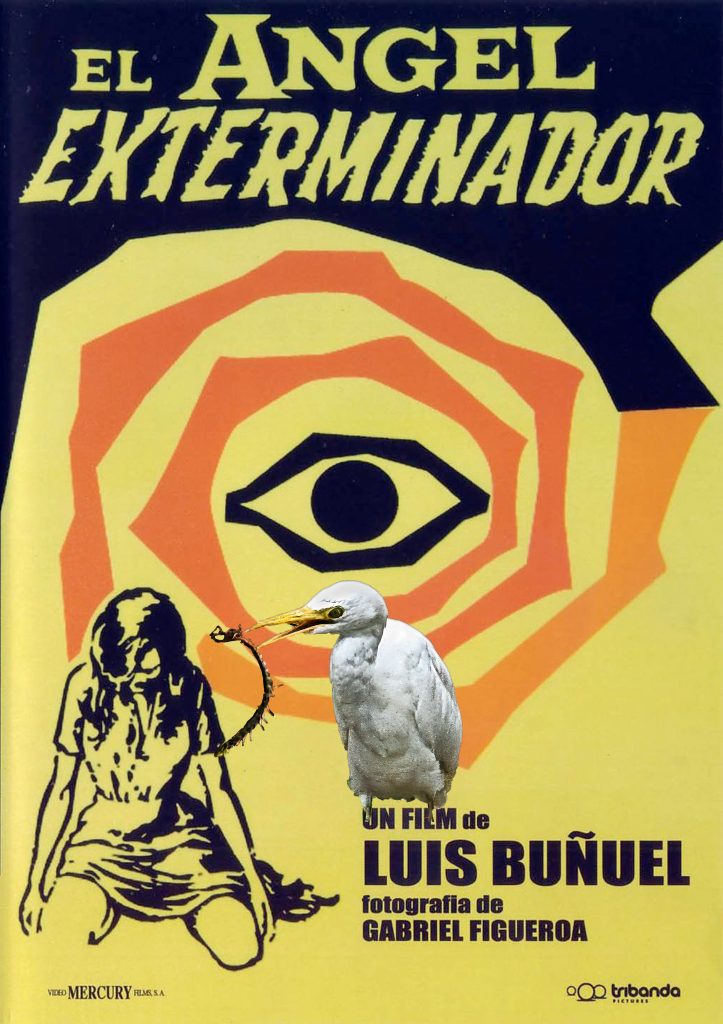
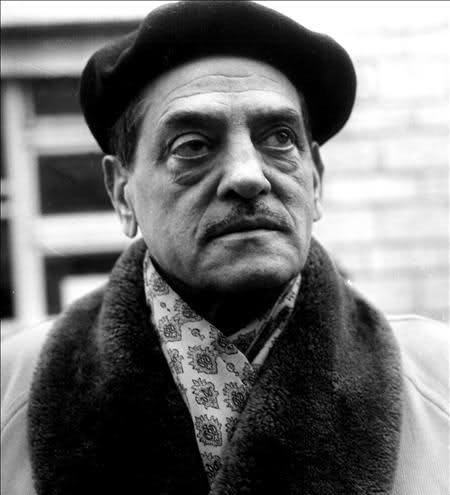
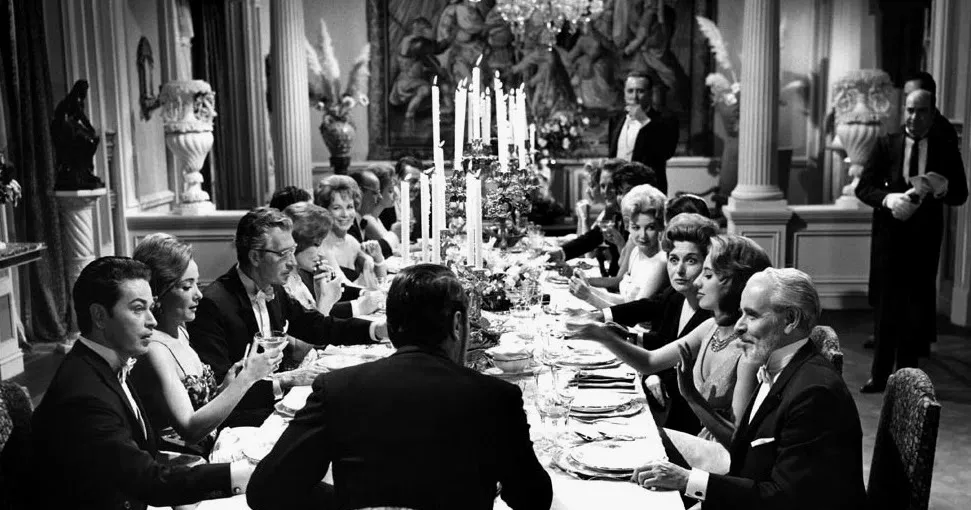
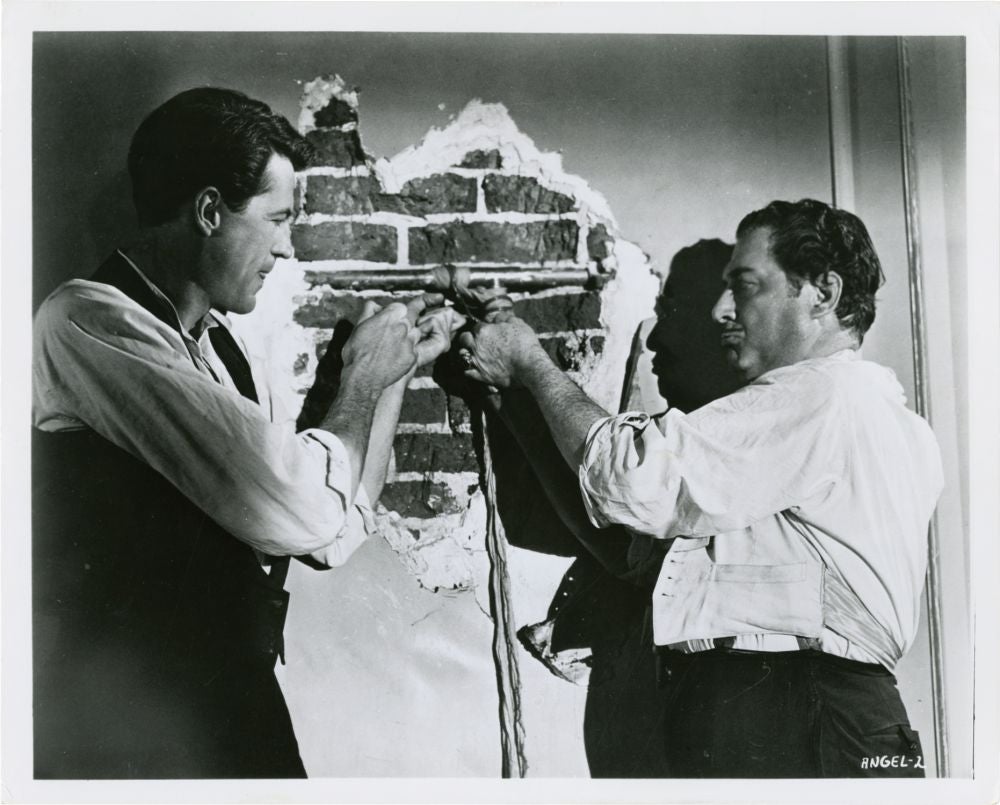
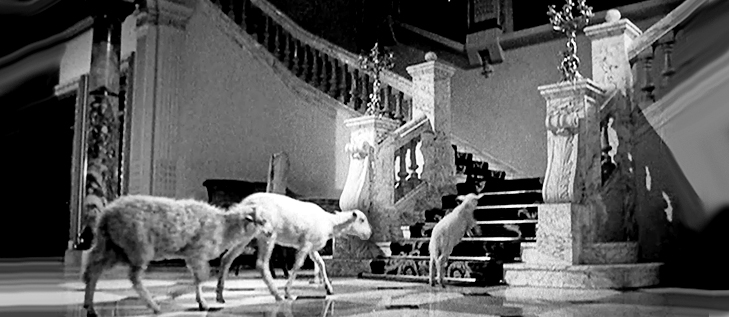
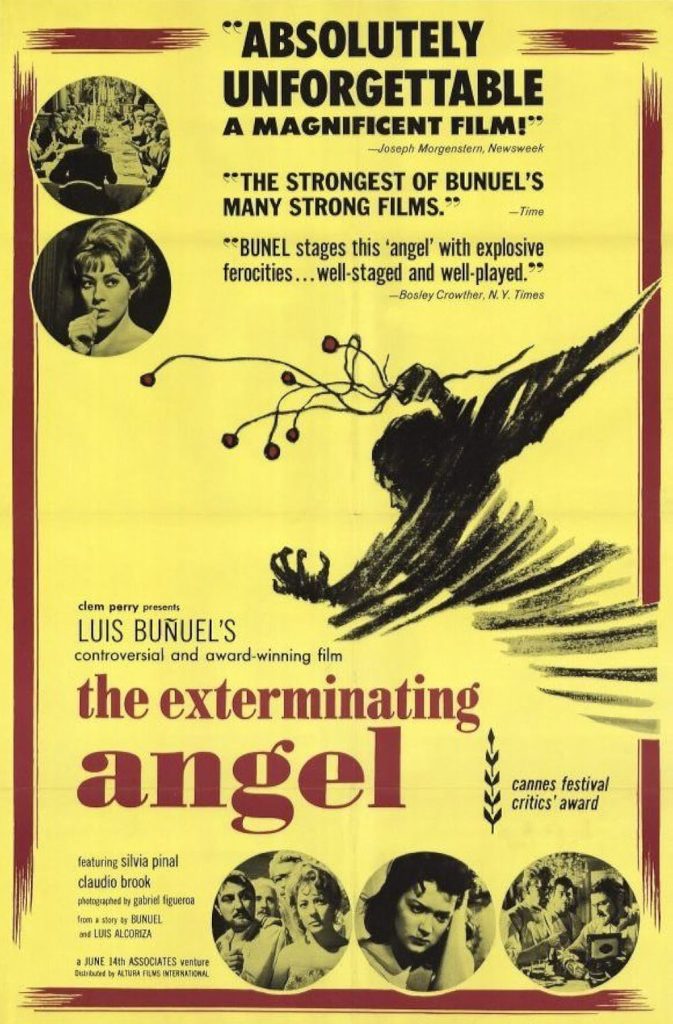


Recent comments